

Please verify you are a human
Access to this page has been denied because we believe you are using automation tools to browse the website.
This may happen as a result of the following:
- Javascript is disabled or blocked by an extension (ad blockers for example)
- Your browser does not support cookies
Please make sure that Javascript and cookies are enabled on your browser and that you are not blocking them from loading.
Reference ID: b6d261bc-f746-11ee-a2fd-43be8707861d
Powered by PerimeterX , Inc.

MOORING LINES
with a global network of premium rope manufacturers, we can offer you the best mooring lines based off your budget and/ or requirements. our industry experience from working onboard superyachts and within the supply chain provides us with the knowledge and expertise to offer advice on all mooring lines and tender tow lines for superyachts. whether it is outfitting a new build, replacing existing worn mooring lines, or expanding your selection onboard, no enquiry is too big for us , brands we supply: , gottifredi maffioli, do you need new or replacement mooring lines .

Or would you like to upgrade your current setup?
Heaving lines, mooring line splicing, custom labelling, leather chafe protection, testimonial, " polaris yacht supply recently supplied me with six new mooring lines for sy atao. from start to finish, my experience with polaris yacht supply was exceptional, and i couldn't be more satisfied with the service they provided. first and foremost, the quality of the mooring lines i received were of the highest standard. the lines are sturdy, durable and expertly crafted, providing me with the confidence and peace of mind i need when securing the yacht. polaris yacht supply clearly pays attention to detail and ensures that their products meet the highest standards of excellence. moreover, the entire process of working with polaris yacht supply was seamless and efficient. the company demonstrated a deep understanding of the yacht's specific needs and requirements, offering personalised solutions that perfectly matched the yacht's specifications. they consistently communicated with me promptly, keeping me informed about the progress of my order and ensuring timely delivery. the entire transaction was hassle-free, and their commitment to customer satisfaction was evident throughout. i whole heartedly recommend polaris yacht supply to anyone in need of yacht equipment and supplies. their dedication to delivery high-quality products, combined with their exceptional service, sets them apart from the competition. i have no doubt that i will be returning to polaris yacht supply for any future needs that may arise." captain, sy atao - 25m jfa.

CHAFE GUARDS
We have a variety of options available depending on your requirements for chafe protection. from fluffy shearling to our ballistic chafe guards, we have a solution that will protect your cap rails, bulwarks and mooring lines from wear and tear. , protect your brightwork with our chafe guards.

Suitable for all sizes of mooring line!
The ultimate chafe guard. woven from 100% natural sheepskin. perfect for painted and gel coated surfaces, uv resistant, yet cost effective. suitable for both docks and painted or gel coated surfaces. , highly durable and hard wearing, designed to withstand the harshest environments.

MOORING SYSTEMS
BESPOKE SOLUTIONS FOR SAFE
AND HASSLE-FREE DOCKING
At C-SPLICE, we understand that mooring lines are a critical component of any vessel's safety and functionality. That's why we offer a wide range of high-quality lines that are not only secure and sustainable, but also easy to handle and affordable.
Our team of experts has years of on-board experience with large superyachts and various types of vessels, giving us the knowledge and insight to provide targeted solutions that meet the specific needs of each yacht. We take the time to ask the right questions and carefully consider every detail, ensuring that each mooring system we provide is an exact fit.
With a variety of brands, constructions, and setups to choose from, we have the flexibility to provide tailor-made solutions that meet your unique requirements. Whether you need a single line or a complete mooring system, we have the expertise and resources to deliver the perfect solution every time.
Function, design , and excellence in both,
set the benchmarks of our work.

CONSTRUCTIONS & MATERIALS
Braided PES cover & core
Great flexibility & stretch
High strength & abrasion resitance, even when wet
Long service life
12-strand braided polyester, no core
High strength & lower stretch
Excellent abrasion & UV resistance
DOUBLE-BRAID
Round Plait
Dyneema core & PES cover
Good flexibility, no stretch
Very high breaking loads allow for smaller diameters
Light & easy to handle
Always combine with stretchers (sacfrifical loops)

8-strand braided polyester, no core
Extremely robust & durable
Excellent grip
High UV resistance
Does not harden
Square Plait
COMMON CONFIGURATIONS
POLYESTER LINES
WITH CHAFE PROTECTION
Double-braided polyester mooring lines are the go-to choice for yachts of all sizes with conveniently sized winches, offering excellent performance at a great price point. They remain soft and flexible throughout their service life and maintain their breaking strength when wet, making them a practical and reliable option.
To ensure your mooring lines last even longer, we offer a range of chafe covers to suit every budget and style. Whether you need heavy-duty protection or a more budget-friendly option, we have the perfect solution for you.
Check our selection of chafe covers below and send us your quote request today to get started!

BALLISTIC NYLON
HAND-STITCHED LEATHER
CHAFE PROTECTION OPTIONS

Our bestseller: The durable and modern C-SPLICE ballistic Nylon cover. Our clients value it above all for its excellent price-performance ratio. Its double-layered construction with multiple reinforced seams of heavy-duty outdoor thread ensure that it can withstand even the toughest conditions. Plus, its technical fabric adds a modern touch to your mooring lines. Experience excellent mooring line protection at fantastic value.

Ultimate strength and style. Made from the world's strongest fiber, these braided covers offer unbeatable abrasion resistance while allowing the line to maintain its full flexibility. And with their sleek and sophisticated look, Dyneema sleeve covers are the perfect match for the modern aesthetics of superyachts. But it's not just about looks – our covers are integrated into the spliced eye of the line and sewn securely at the ends for maximum durability and protection. Wherever you're docking, you can trust these Dyneema sleeve covers to keep your mooring lines safe and looking great.
Abrasion-resistant marine leather, hand-stitched with strong braided twine. These covers offer excellent form stability and crease resistance - they do not crumple and always stay in place, ensuring that the strained parts of the mooring line eye are protected throughout its service life. With proven performance and a classic look, our hand-stitched leather covers are a great choice for any yacht. Plus, their mid-range price point offers great value for money.

Recommended
PROTECTION OPTIONS
for both stretchers and mooring line eyes

MAXIMUM STRENGTH
AT MINIMAL BULK
These high-tech lines are the ultimate solution for large or medium-sized yachts with smaller winches. Featuring a fantastic strength-to-diameter ratio, they provide maximum strength at greatly reduced line diameters.
While the outer polyester cover provides excellent abrasion and UV resistance, ensuring durability and longevity, the secret lies in the Dyneema core – it is stronger than steel, yet incredibly lightweight.
Dyneema core lines are a favourite among deck crews for good reason. They are significantly lighter and take up less space than traditional polyester lines, making them a breeze to handle and store. Say goodbye to heavy, bulky lines that are difficult to manage, and hello to the convenience and ease of these high-tech lines.
Our team is happy to help you select the optimal diameter and configuration for your yacht's specific needs and specifications.
SACRIFIC I AL LOOPS
Dyneema core lines have close to zero stretch and therefore require the addition of Stretchers (also called Sacrificial Loops or Mooring Tails) when used as mooring lines.
The double-braid polyester Stretchers in this configuration offer the elongation needed in a mooring system. They act as shock absorbers and take on the abrasion strain from the mooring bollards. When they are worn or damaged, they can easily be replaced, while the more costly Dyneema core lines remain intact.
CHAFE PROTECTION
For maximum flexibility in any configuration with Loops, we recommend the Nylon or Dyneema protection options for both stretchers and mooring line eyes.
DYNEEMA CORE LINES
WITH STRETCHERS
LINE IDENTIFICATORS & FINISHES

LENGTH MARKERS & WHIPPING
We add embroidered length markers and/or whippings of any colour to allow you to identify each line on first glance.
We aim for a high-quality, durable and elegant finish from splice to whipping.

with NFC Tags
If you want to easily look up all the specifications of your lines, keep track of when and where you bought them, and access safety and maintenance instructions without searching, NFC Tags are for you. We insert them into your line and a quick scan with your phone reveals all the info you need.
REQUEST YOUR QUOTE TODAY
_edited_edited.png)
Send us one of the Quote Forms you can download above or simply contact us via email with the details of what you need. Also, let us know where you would like to receive your mooring lines – we ship to wherever you are.
EVERY YACHT IS UNIQUE.
AND SOME ARE NOT.
UNSURE WHICH OPTION TO CHOOSE? ASK US .
We are happy to offer advice. Experience has taught us what to look out for in specific builds and bespoke yachts of all sizes.

MOORING LINE PROJECTS


- Gear Directory
- Multihull Sailor
- Boats for Sale
- Real Estate
- Maintenance & Hardware
- Water Sports
Enhance Your Sailing Experience With the Best Mooring Lines
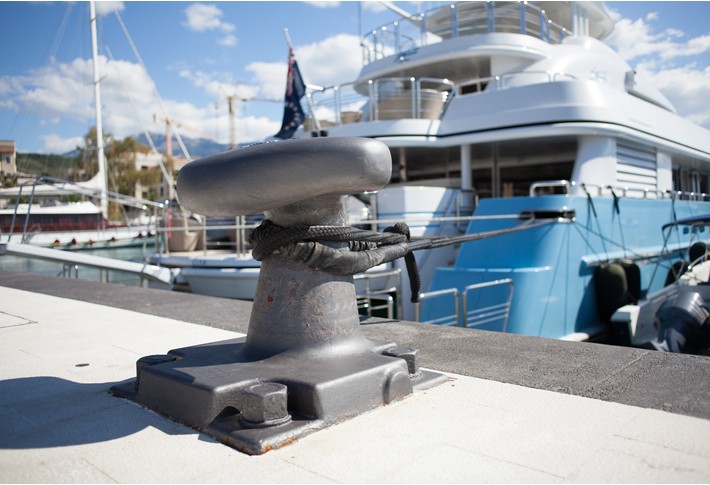
Our content is meticulously curated through independent research, testing, reviews, and AI-driven recommendations, all designed to present you with the finest product choices. When you make a purchase through our links, it could result in us earning a commission.
Also called docking lines, mooring lines are used for mooring or securing your boat on a dock or anchor buoy for a short while. When your boat is not being used, it is crucial to have a strong mooring line that holds your boat safe and secure for as long as is necessary. No matter how glamorous your boat is, if your mooring line is substandard you risk losing or damaging your boat and everything in it—making it all the more important for you to ensure you’ve invested in only the finest of brands.
To help you out, we’ve curated a list of some of the premium mooring lines of 2024.
- Editor’s Choice: INNOCEDEAR Mooring Line Shop Now ➔
- Best Quality: Rainier Supply Co Mooring Line Shop Now ➔
- Stretch-resistant: ACY Marine Nylon Mooring Line Shop Now ➔
- Aesthetically Pleasing: Better Boat Mooring Line Shop Now ➔
- Most Protective: Chirsfly Bungee Mooring Lines Shop Now ➔
- 1 The Qualities of a Good Mooring Line
- 2 How Long Should a Mooring Line Be?
- 3 How To Choose the Right Mooring Line for Your Boat?
- 4 Rope material
How can I tell if my mooring line needs replacement?
Which is the best material for making mooring lines, what is the right size of mooring line for my boat, how long does the average mooring line last, how can i care for my mooring line, related reviews, best mooring lines of 2024 reviewed in detail, editor’s choice.
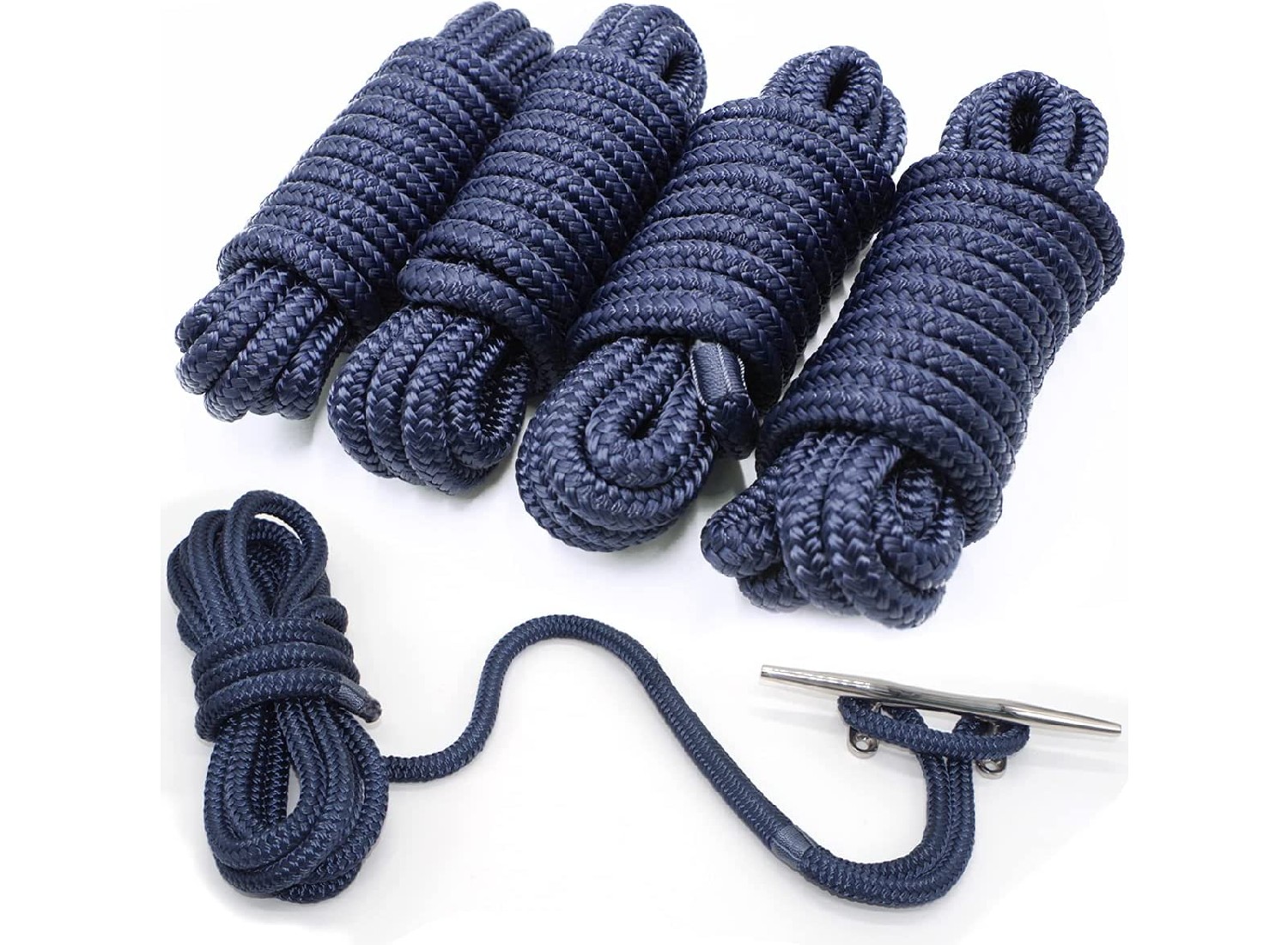
INNOCEDEAR Mooring Line
INNOCEDEAR’s Mooring Line is sturdy enough to securely hold your ship even in extreme weather conditions. Owed to the double-braided design of the ropes that keeps them strong and intact, it also prevents the ropes from fraying. And because these nylon ropes can also easily withstand rough elements like salt and UV rays, you can rest assured it will last for years to come.
These mooring lines are 15 feet in length and have a diameter of ½ inches. Appropriate for small to medium-sized boats that are no longer than 35 feet, this product is our favorite because it provides extraordinary strength without damaging your boat’s paint job or exterior.
- Damage-resistant fibers ensure no fraying
- The double-braided ropes are sturdy
- Great for all weather conditions
- Can be bulky to carry
Best Quality
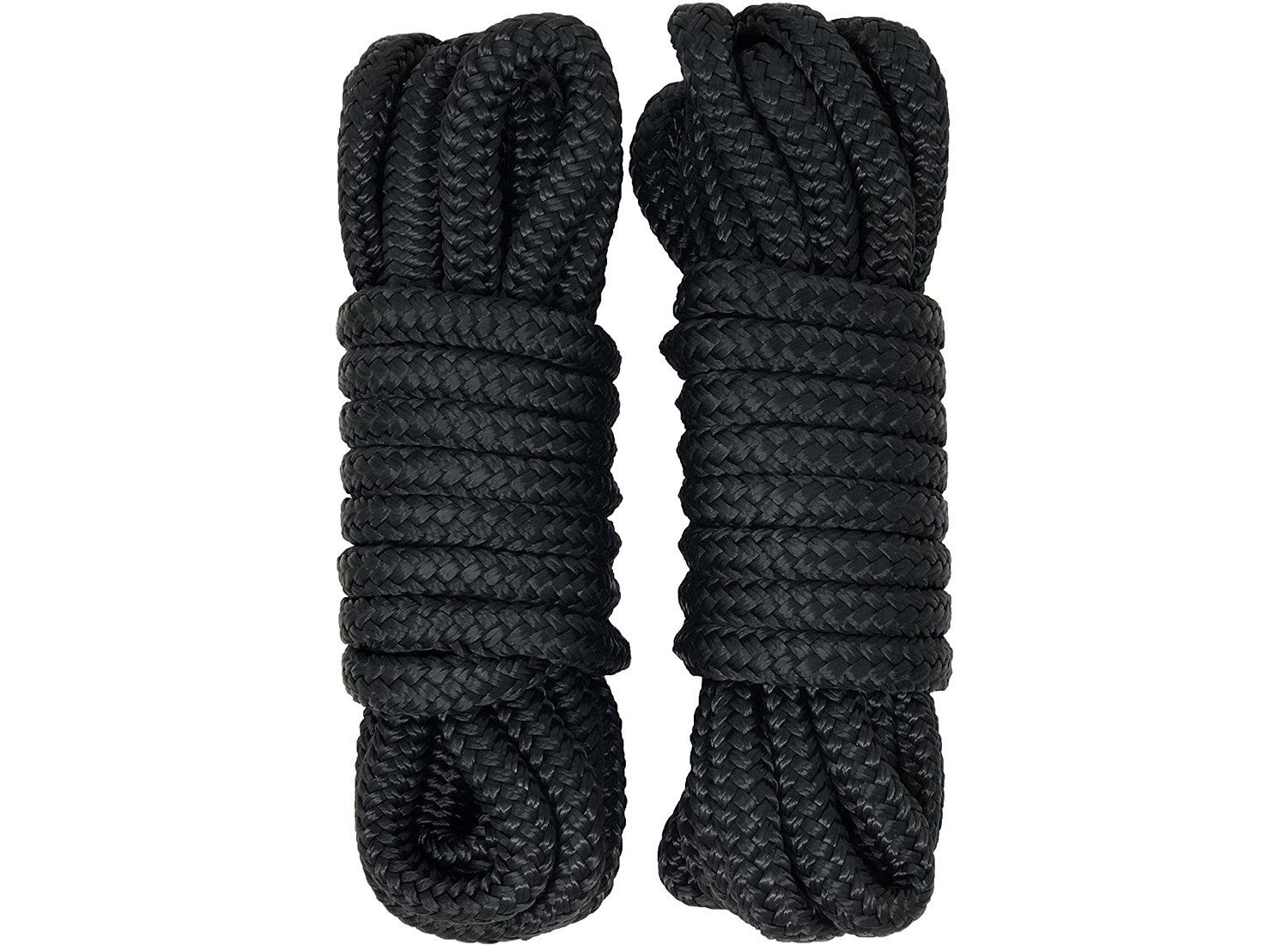
Rainier Supply Co Mooring Line
These nylon docking ropes by Rainier Supply Co are the perfect fit for keeping your boat moored and stable. It is great for boats that are up to 27 feet long, and each of these dock lines has a tensile strength of 4,000 pounds. Also capable of enduring weights up to 820 pounds, these dock lines are heat-treated to ensure no fraying and breakage. And since the ropes are made of nylon, you can rest assured that they’ll last you for years to come.
Despite their sturdiness, the mooring lines are soft on your hands and do not scar or bruise your hands while in use.
- The docking lines last a long time
- Naturally deters scratches
- Gentle on the hands
- The weave is not tight enough
Stretch-resistant
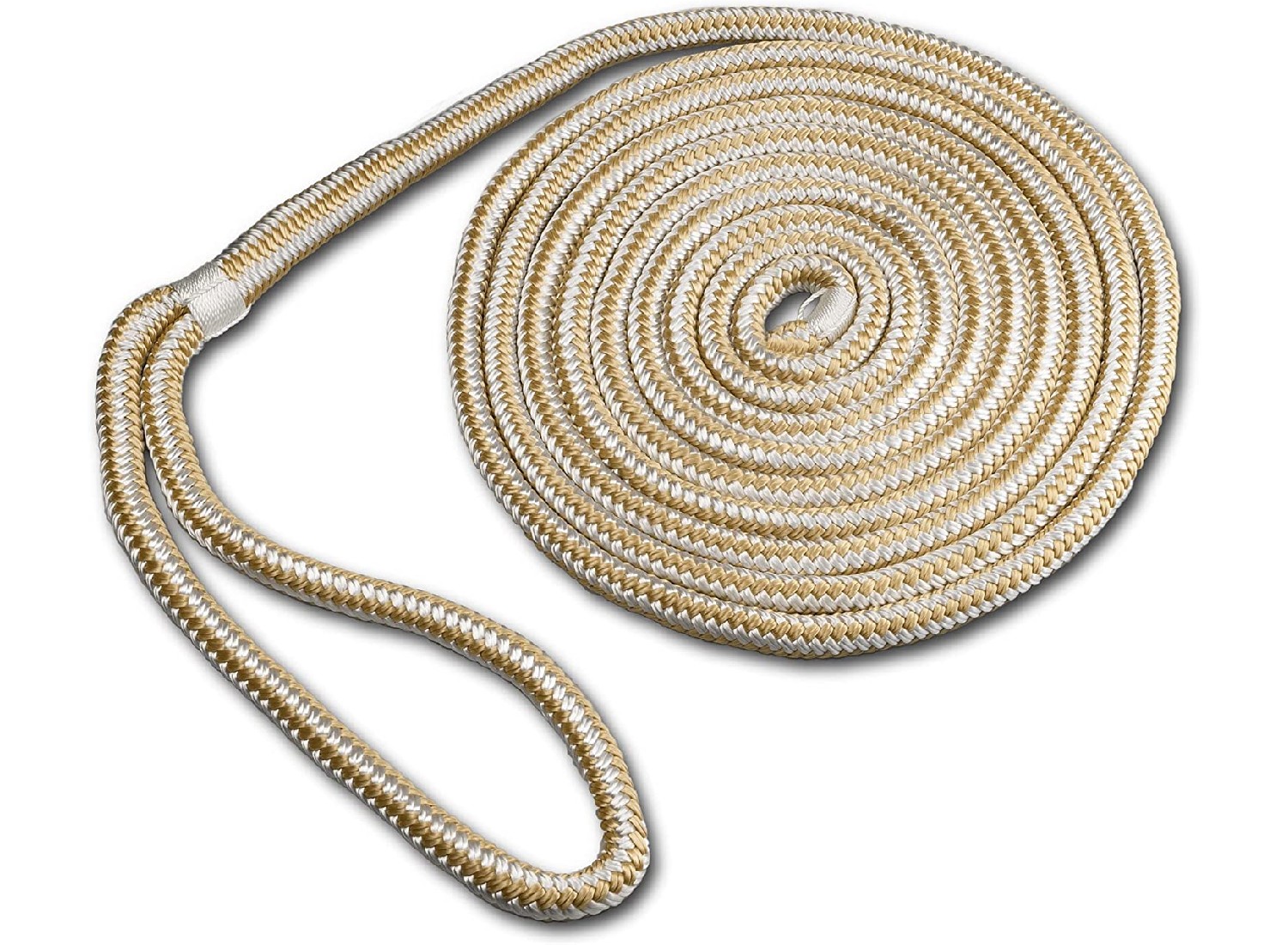
ACY Marine Nylon Mooring Line
This nylon mooring line by ACY Marine is stretchy and shock-resistant, which means that you can easily apply pressure to it without fearing any breakage. The mooring line is also resistant to UV rays, which makes it immune to any damage caused by the sun’s rays.
Also quite flexible and championed for its strength, it is safe to use and perfect for professionals and hobbyist anglers alike. The rope also has a spliced eye for effortless docking, making it a perfect option for those who struggle to secure their boat.
- It can easily withstand tension and force
- It can resist sun damage
- It saves time
- One rope is not enough for docking
Aesthetically Pleasing
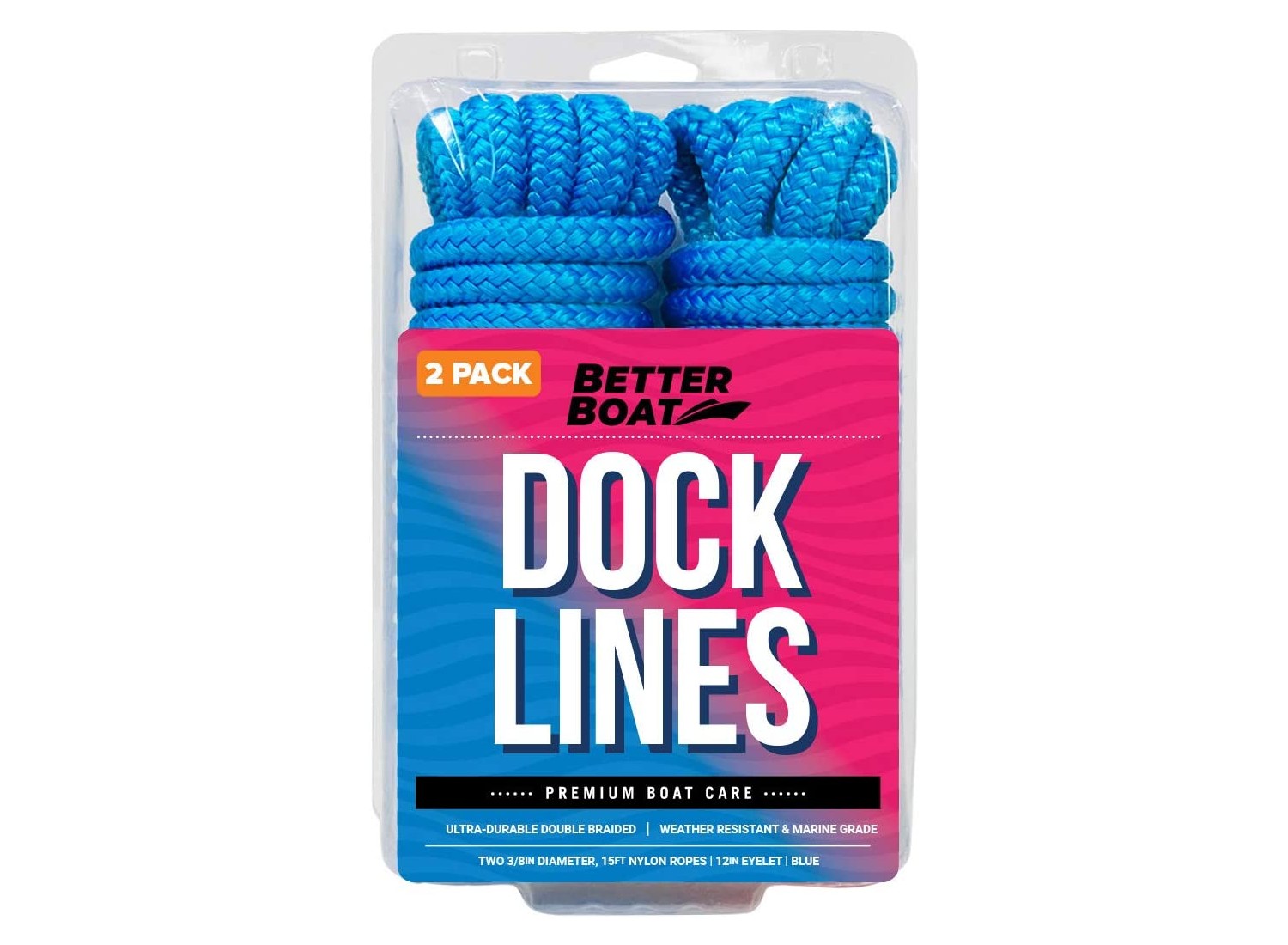
Better Boat Mooring Line
There are really no restrictions when it comes to looking for a good mooring line. Coming to you in a pack of two, these bright blue docking ropes by Better Boat are made of marine-grade, double-braided nylon. They can easily withstand shocks and are really soft on the hands, making them comfortable to handle.
These ropes are weather-resistant and do not get damaged due to salt water, making them quite resilient and great for use in seas and lakes. Each rope also comes with a 12 inch eyelet for easy docking.
- Easy to handle
- Great shock absorption
- Does not damage the exterior
- It may be a little slippery
Most Protective
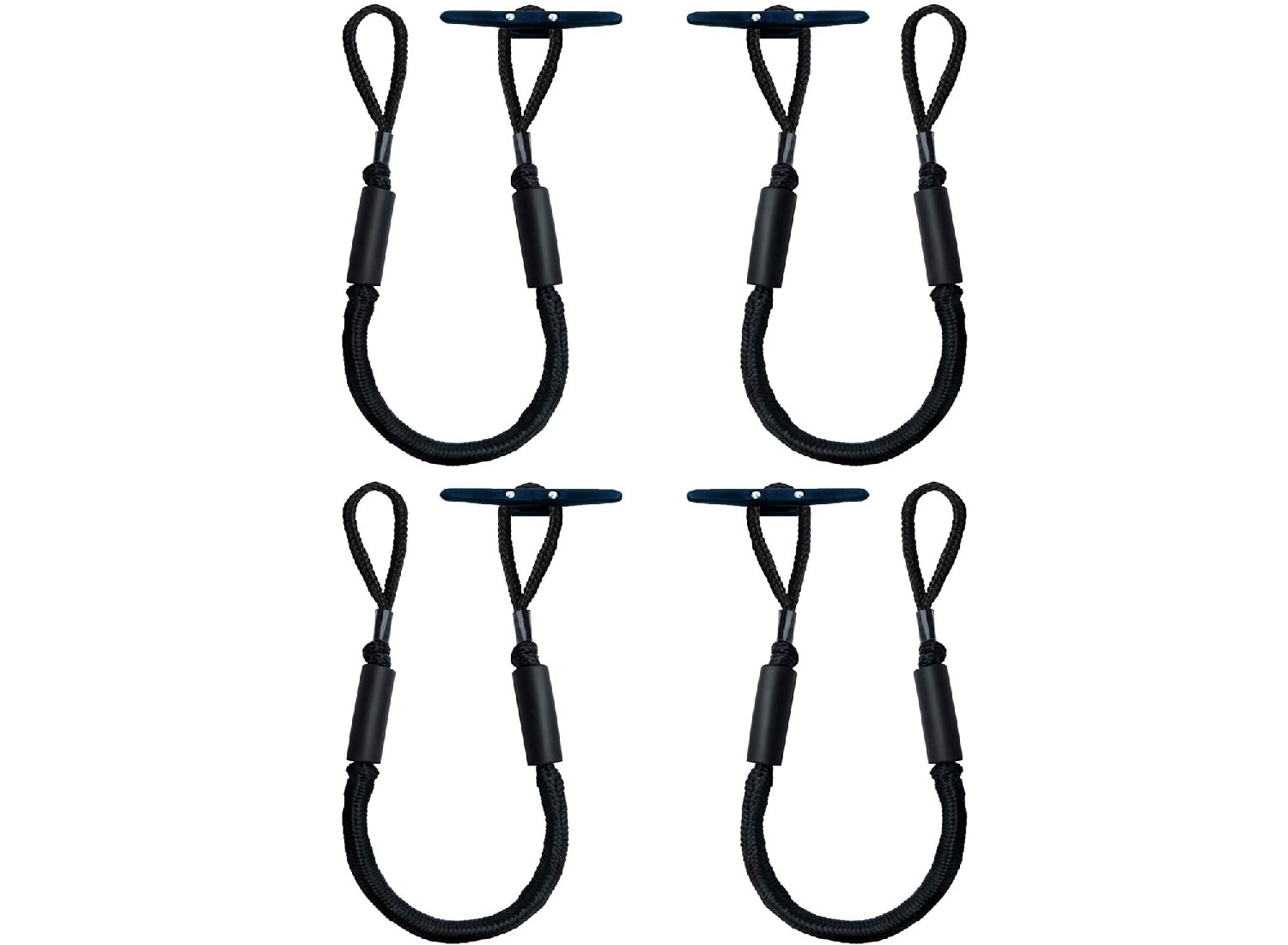
Chirsfly Bungee Mooring Lines
These sturdy bungee mooring lines by Chirsfly are made of high-quality bungee cord and measure around 4 feet in length. Their elasticity allows them to be stretched up to 5.5 feet, and to add to their functionality there is a secondary concealed rope within the bungee rope that acts as a snubber. With the two foam floats on the sides preventing chafing, the two sliding adjustments make it all the more easier to dock with ease.
The protective material and design of the rope allow it to absorb shocks and withstand large forces. This mooring line can also be used to dock boats, jet skis, rafts, cleats and many other kinds of vessels.
- The rope is elastic
- It is built for extra protection
- Prevents chafing of the boat’s exterior
- It may get frayed under the pressure
Mooring Line Buying Guide
It’s important that you choose the right docking line for your boat to ensure your safety. The following guide will help you learn more about mooring lines, as well as how to choose the right one for yourself.
The Qualities of a Good Mooring Line
It is crucial to understand what makes a good mooring line. A quality mooring line has some degree of elasticity or elongation, and any movement caused by the wind or waves can be absorbed by the mooring line. Similarly, a good docking line will also have a high breaking force that allows it to carry and support large weight without breaking or fraying.
How Long Should a Mooring Line Be?
The length of a mooring line is defined by the size of the boat you’re using it with. It is generally advised to keep at least four dock lines on board, with two measuring the same length as the boat and the other two measuring approximately twice the boat’s width.
This will enable you to prepare for different kinds of ports and moorings.
How To Choose the Right Mooring Line for Your Boat?
While there are many features to consider when buying a mooring line for your boat, some of them are more important than others. We have covered most of these features below so you can make the right decision when choosing a mooring line.
Rope material
The most commonly used material for mooring lines is nylon. Nylon is sturdy and can easily absorb shocks. While it can also resist abrasion better than any other material, nylon may get damaged and degrade in high temperatures.
Polyester mooring lines are also good for docking. Aside from resisting UV rays and having great grip and elasticity, the material is also cheaper than nylon and absorbs very little water.
The length of your mooring line is dependent on your boat’s size, which is why you must have exact measurements of your boat when you go looking for a mooring line. While you can have bow lines and stern lines that are half your boat’s length, your spring lines should at least be equal to the length of your boat.
You may keep longer spring lines, but it is not advised to have a spring line shorter than your boat.
Mooring lines come in different sizes that include varying diameters. The diameter of your rope indicates how well it will perform with your boat, and it is normally advised to have at least ⅛ inch diameter for every 9 feet of your boat’s length. This means that for a boat of 27 feet, your mooring line should be at least ⅜ inches in diameter.
Mooring Line for Boats FAQ
You’ll know your mooring line needs replacement if it shows signs of extensive wear and tear that can’t be repaired.
Nylon is the sturdiest and most commonly used material for manufacturing mooring lines. This is because nylon ropes have great tensile strength and are less likely to snap when exerted force. For those on a budget, nylon can also prove to be more budget-friendly when compared to other options.
The size of your mooring line will be dependent on your boat. As mentioned previously, your bow and stern lines should at least be half the size of your boat. The diameter of your docking line should be ⅛ inch for every 9 feet of boat length.
Generally speaking, the average mooring line will last as long as you take care of it. Keeping up with regular maintenance can help extend its lifespan. Investing in mooring lines that deter UV rays can also prove effective in the long run.
It is important to use your mooring lines carefully to reduce the damage that comes with daily wear and tear . This means that you shouldn't be too abrupt when changing the direction of the line to prevent chafing. You can also use chafe guards to protect your dock line from chafing damage.
Article Contributors
Sail magazine review team.
SAIL Magazine Review Team reports on best-selling products in sailing and boating. The SAIL Magazine editorial staff is not involved in the creation of this content. SAIL Magazine is reader-supported: When you buy through links on our site, we may earn an affiliate commission. The SAIL Review Team is composed of authors, editors, and sailors. Artificial Intelligence (large language models) may have been used in the research and creation of the content.
To ensure questions about product testing or a specific article are addressed, please contact [email protected]

- CLASSIFIEDS
- NEWSLETTERS
- SUBMIT NEWS
A Guide to Mooring Lines from upffront.com
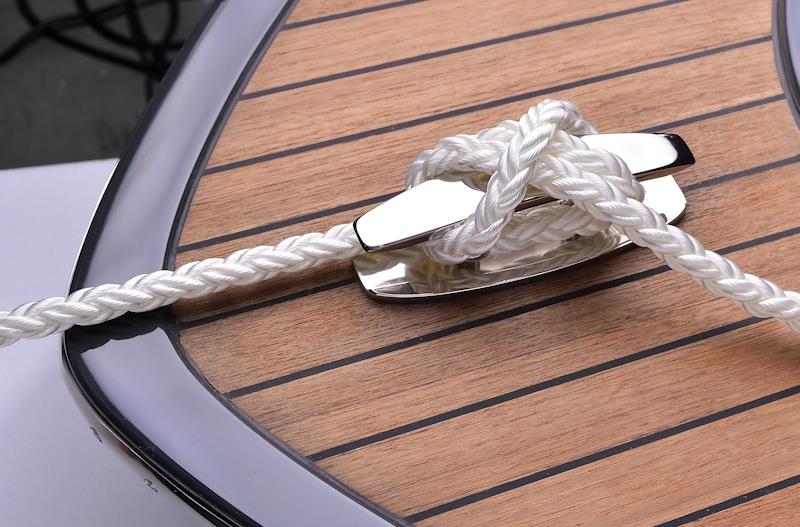
Related Articles
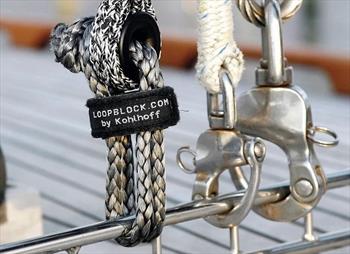
Upcoming Events
- Mastering the Art of Boat Mooring: A Comprehensive Guide
Navigating the open waters demands more than just the thrill of the journey; it requires the mastery of a fundamental skill—boat mooring . Whether you find yourself at the helm of a sleek yacht, a versatile pontoon boat, or any other watercraft, the art of securing your vessel isn't just about tying knots; it's about ensuring safety and cultivating peace of mind amidst the undulating waves. This comprehensive guide invites you on a journey to explore the intricate facets of boat mooring, encompassing the foundational basics to advanced techniques that elevate your maritime competence. Join us as we unveil the secrets to a secure and confident mooring experience, regardless of your seafaring expertise.
Understanding the Basics
A process that goes beyond a simple act of tying knots , mooring is the art of securing a boat firmly to a fixed structure, a vital maneuver preventing the vessel from untethered drifts and unwarranted movements. Whether it's a mooring buoy bobbing in open waters, a stable pontoon awaiting a boat's embrace, or the reassuring solidity of a dock, each scenario demands a nuanced approach. Before setting sail into the realm of advanced techniques, it is paramount to grasp the foundational basics of mooring. In this section, we embark on a journey to unravel the essence of boat mooring, where every knot and every connection is a declaration of maritime control and expertise.
Types of Mooring Points
Embarking on a journey across the seas requires more than just a navigational compass—it demands a nuanced understanding of the diverse mooring points that await seafarers. Here, we explore three quintessential mooring points that stand as sentinels against the capricious tides:
Mooring Buoys
In the vast expanse of open waters, mooring buoys emerge as steadfast allies. These floating devices, firmly anchored to the sea floor, beckon boats to secure their mooring lines, offering stability in the midst of the fluid and unpredictable nature of the sea.
Mooring Pontoons
Harboring both convenience and reliability, mooring pontoons present a floating sanctuary for boats. These platforms, seamlessly connected to the shore or anchored to the seabed, serve as stable foundations for mooring endeavors. As vessels approach, pontoons extend a welcoming embrace, facilitating secure connections and ensuring a smooth docking experience.
Dock Cleats
Along bustling docks and harbors, the unsung heroes of mooring are the sturdy dock cleats. These fittings, strategically placed on docks, stand ready to shoulder the responsibility of securing boats. Designed with durability in mind, dock cleats become steadfast partners in the delicate dance between boat and shore, offering a reliable point of connection in the bustling domain of marine activity.
In unraveling the tapestry of mooring points, we discover that each holds a unique role in the maritime narrative, beckoning sailors to navigate their vessels with precision and confidence.
Essential Equipment
Setting sail into the realm of boat mooring necessitates more than just maritime know-how; it demands a keen understanding of the essential equipment that transforms the act into a seamless and secure endeavor. Here, we introduce the trio of indispensable tools that form the backbone of every successful mooring operation:
Mooring Lines
Consider mooring lines as the lifelines connecting your vessel to stability. These robust ropes play a pivotal role in the mooring process, serving as the literal ties that bind your boat to the chosen mooring point—be it a buoy, pontoon, or dock. Crafted from materials designed to withstand the rigors of the sea, mooring lines are the first and last defense against the whims of the waves.
In the intricate ballet of boat mooring, cleats take center stage as the performers facilitating the choreography. These fittings, strategically placed on both boat and dock, serve as anchor points for mooring lines. By providing a secure and reliable grip, cleats transform the potential chaos of unbridled movement into a synchronized dance between vessel and mooring point.
Enter the unsung heroes of boat mooring—the protective guardians known as fenders. As cushions strategically positioned along the sides of the boat, fenders act as a defensive barrier against the potential impact with the mooring structure. By absorbing shock and preventing unsightly dings and scratches, fenders contribute to the longevity and aesthetics of both boat and mooring point.
In the symphony of boat mooring, these essential equipment components harmonize to create a seamless and secure maritime experience. As you embark on your mooring journey, ensure that your arsenal includes these tools, each playing a distinct role in the safety and success of your seafaring endeavors.
Techniques for Boat Mooring
As the sea beckons and vessels traverse the waterways, the mastery of boat mooring techniques becomes a captain's artistry. Navigating the nuances of securing your vessel is a skill set that goes beyond the horizon. Let's delve into the techniques that elevate mooring from a task to a finely tuned maritime performance:
Approaching the Mooring Point
The prelude to a successful mooring begins with a measured approach. Slow and controlled navigation is the key symphony conductor, allowing the captain to assess the mooring point and make adjustments with precision. As the boat gracefully glides towards its destination, this deliberate approach sets the stage for a seamless mooring experience.
Preparing Mooring Lines
In the overture of boat mooring, the importance of preparation cannot be overstated. Have your mooring lines ready and properly coiled, akin to a musician tuning their instrument before a performance. This ensures efficient deployment and eliminates the risk of tangled lines, enabling a swift and secure connection to the chosen mooring point.
Choosing the Right Knots
The artistry of boat mooring extends to the choice of knots —a sailor's repertoire of secure ties. Learn and master knots such as the cleat hitch and bowline, each serving a specific purpose in the delicate dance between boat and mooring point. The right knot is not just a means of connection; it's a testament to seamanship and expertise.
Accounting for Wind and Current
Nature's interlude in the mooring performance comes in the form of wind and current. A skilled captain understands the environmental factors at play and adjusts their approach accordingly. Accounting for the invisible forces that shape the sea ensures that the mooring process unfolds with grace and control, even in the face of challenging conditions.
In the grand composition of boat mooring, these techniques harmonize to orchestrate a safe, efficient, and controlled connection between vessel and mooring point. As you navigate the waters, let these techniques be your compass, guiding you through the intricate steps of securing your maritime companion.
Mooring Safety Considerations
As the captain orchestrates the mooring ballet, safety takes center stage in this maritime performance. The sea, while enchanting, can be unpredictable, demanding a vigilant conductor. Here are the key safety considerations to ensure a harmonious and secure mooring experience:
Weather Conditions
Nature's temperament plays a pivotal role in the success of any mooring endeavor. Stay attuned to the weather forecast , for winds and storms can transform the serene seascape into a challenging stage. Adjust mooring techniques in anticipation of adverse weather conditions, ensuring that your vessel remains steadfast against the elements.
Checking Equipment
The reliability of your mooring operation hinges on the integrity of your equipment. Regular inspections are the overture to safety. Take the time to meticulously examine and maintain mooring lines, cleats, and other essential gear. A well-maintained ensemble ensures that every element performs its role seamlessly, reducing the risk of unexpected mishaps.
Boat Size and Type
In the maritime symphony, not all vessels dance to the same rhythm. Recognize that different boats have distinct mooring requirements. Adapt your techniques to accommodate the size and type of your vessel. From the nimble sailboat to the majestic yacht, tailor your approach to ensure that your mooring practices are finely tuned to the nuances of your maritime companion.
In the intricate choreography of mooring safety, these considerations form the melody that guides the dance between vessel and mooring point. Prioritize safety, be it in the face of changing weather or the routine check of equipment, and let these considerations be your compass on the journey to secure and confident boat mooring.
Read our top notch articles on topics such as sailing, sailing tips and destinations in our Magazine.
Mooring yachts
Navigating the seas aboard a yacht adds a layer of sophistication to the art of mooring. As larger vessels command the waters, it's crucial to consider special considerations and employ specialized equipment. Delve into the nuances of mooring yachts with these focused insights:
Special Considerations
The grandeur of yachts demands an extra measure of attention to detail during the mooring ballet. Larger vessels, with their increased size and weight, may respond differently to environmental forces. Navigate with heightened awareness, considering factors such as wind, current, and the spatial requirements unique to yachts. A captain's discerning eye and a thorough understanding of the vessel's dynamics are paramount for a graceful mooring performance.
Yacht Lines and Cleats
Yachts, being the crown jewels of the maritime world, require a bespoke ensemble of mooring equipment. Familiarize yourself with yacht lines—robust, purpose-built ropes designed to bear the weight and dimensions of these majestic vessels. Explore the intricacies of yacht cleats, specialized fittings strategically placed to handle the forces exerted by large yachts during mooring. Mastery of yacht-specific lines and cleats is the key to a secure and confident mooring experience for vessels of grand stature.
In the realm of yacht mooring, precision and understanding are the compass points guiding the captain. Embrace the challenge of mooring larger vessels with the grace and finesse befitting their stature, ensuring that every connection to the mooring point is a testament to seamanship and mastery of the seas.
Legal and Environmental Considerations
As stewards of the seas, boat owners and sailors bear the responsibility of preserving the marine environment and adhering to local regulations. In the final act of our mooring guide, let's explore the legal and environmental considerations that underscore the importance of responsible seafaring:
Local Regulations
Before casting off into the waves, familiarize yourself with the maritime laws and mooring regulations governing your area. Different regions may have specific guidelines regarding mooring distances, permitted locations, and time restrictions. Adhering to these regulations not only ensures compliance but also fosters a harmonious coexistence with other seafarers and the coastal community.
Environmental Impact
The footprint left by boat mooring extends beyond the vessel itself. Practice responsible mooring to minimize environmental impact and protect delicate marine ecosystems. Avoid dropping anchor in sensitive areas such as coral reefs or seagrass beds. Opt for designated mooring zones when available, and be mindful of the potential repercussions of careless mooring practices. By embracing eco-friendly mooring, you contribute to the preservation of the diverse and fragile underwater world.
In the vast tapestry of maritime adventures, mastering the art of boat mooring emerges as a beacon of skill and responsibility. This guide, spanning the spectrum from fundamental basics to specialized techniques, equips seafarers with the knowledge to navigate the waters with confidence.
Understanding the nuances of boat mooring, employing the right equipment, and applying proper techniques become not just a skill set but a commitment to safety and environmental stewardship. Whether you're setting sail as a novice or as an experienced captain, may this guide serve as your compass, empowering you to embark on every journey with the assurance that your vessel is securely moored, and your impact on the seas is one of respect and care. Safe travels, and may the seas welcome you with open waves.
So what are you waiting for? Take a look at our range of charter boats and head to some of our favourite
sailing destinations .
Choosing The Right Mooring Lines Or Dock Lines For Your Boat
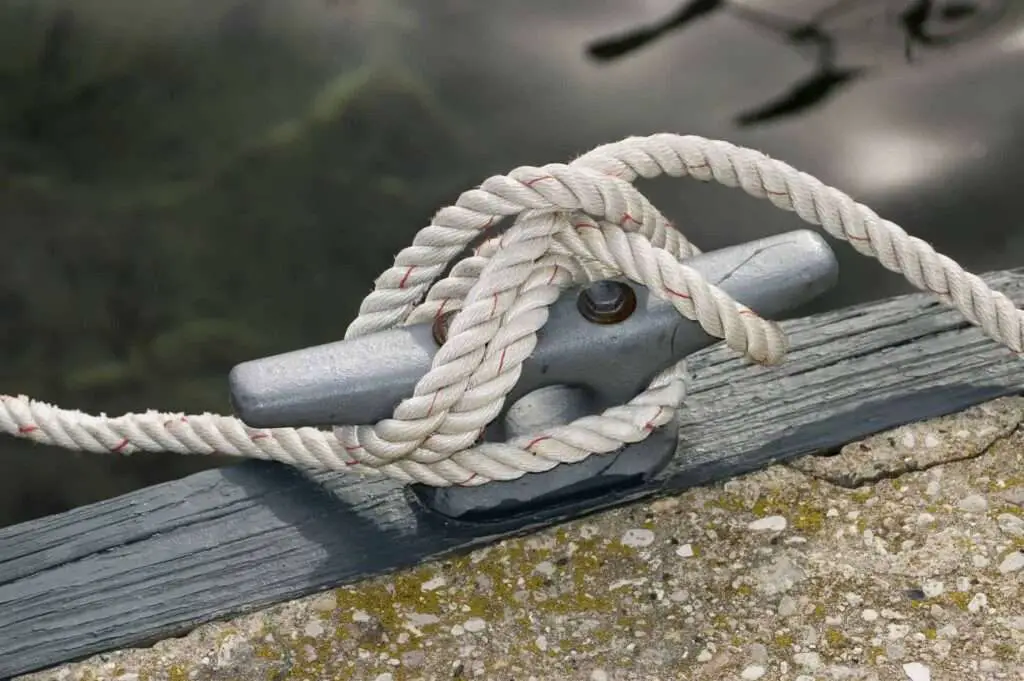
Generally speaking, large and heavy boats need longer and thicker mooring lines, but not too thick to hitch around the cleat. The length of the lines can be the same or two third of your boat’s length, or two times greater than the water depth if you want more security in rough waters.
Table of Contents
Selecting the right line material
When it comes to choosing the right mooring line material, there are three main types of rope to consider – polypropylene, polyester, and nylon. Each of these rope materials has its own distinct advantages and disadvantages, so it is important to choose the one that best meets your needs.
Polypropylene is a light, inexpensive, and highly durable synthetic fiber. It is often used for short-term mooring in freshwater environments because it does not absorb much water and remains lightweight.
It does have a tendency to stretch when under tension, however, making it less suitable for long-term applications or heavy boats.
Polyester is more expensive than polypropylene but it is also very strong and resists abrasion and UV rays better than other materials.
Polyester is an ideal choice for permanent mooring in salt water , as it absorbs less water than nylon or polypropylene and is more resistant to UV damage. It is also less prone to stretching when under tension than other materials.
Nylon is the strongest and most expensive of the three materials, but it also absorbs the most water, which makes it less suitable for permanent mooring in saltwater environments.
However, it is more resistant to chafe and abrasion than the other two materials and is a good choice if you need a line with high strength and abrasion resistance.
Selecting the right line types
Mooring lines are essential components of boat safety and the quality of these lines can make the difference between a successful docking experience and a dangerous situation.
Selecting the right mooring line type is important as it will protect your boat from rubbing, dinging, scratching, and rash at the dock.
The most common types of mooring lines are three-strand nylon, double-braided nylon, and solid braid.
Three-strand nylon mooring lines are lightweight and stretchy, providing shock absorption in bumpy waters and protecting your boat from excessive force when docking.
Double-braided nylon lines are stronger than three-strand nylon and feature an outer braid that protects an inner core, making them more durable. They also provide good elasticity and excellent abrasion resistance.
Solid braid mooring lines are the strongest and most rigid type of mooring line, but they lack the elasticity of other types and may be too stiff for some boats.
When choosing the right mooring line type for your boat, consider the environment, size of your boat, amount of wind or current, and the materials you have on hand.
There is no single best mooring line type, but with careful selection, you can choose one that best suits your needs.
Selecting the right line diameter and length
When selecting the right line diameter and length for your mooring lines, there are a few key factors to consider. The most important factor is the size of the boat you are mooring, as this will affect the variety of sizes and types of lines you will need.
Typically, the larger the boat, the thicker and longer the lines will need to be. Additionally, take into account the size of the cleats on your boat as well as the type of hitch that you will use, you can not choose the line that is too thick to hitch around the cleat.
The number of lines also affects the thickness and length of your mooring lines. If you are using two or three lines per cleat, it is recommended to go for heavier and thicker lines for maximum strength. Generally speaking, one boat has 4 to 6 lines.
When selecting line length, consider the size of waves and water roughness as well as the distance from the boat to the moor.
It is best to have a line length at least two times greater than the water depth so that it can hold up even in rougher waters. some suggest the length should be the same as your boat or 2/3 of your boat’s length.
Should mooring lines be tight?
It is important to make sure that your mooring lines are tight, but not too tight. If the mooring lines are too tight, this can lead to damage to the vessel, dock, or mooring lines themselves due to the constant tension.
When adjusting the mooring lines, make sure that they are not too loose or too tight. If they are too loose, the vessel could drift and potentially cause damage.
Ideally, when a vessel is moored, the lines should be tensioned slightly. This is done so that when the vessel moves in the water, the lines don’t become loose and require frequent adjustment.
In order to ensure that the mooring lines are properly tensioned, check the line periodically throughout the day. If they are not taut enough, adjust them until they are just right.
In conclusion, it is important to make sure that your mooring lines are not too loose or too tight. This can help ensure that your vessel is properly moored and will reduce the chances of damaging the vessel, dock, or mooring lines.
How to secure mooring lines?
Once you have chosen the right type of mooring line for your vessel, the next step is to secure them properly. Securely mooring your vessel helps to ensure that it remains in place and does not drift away in windy or rough conditions.
The first step in securing your mooring line is to attach it to a sturdy object such as a cleat or post.
This will provide a firm anchor point for the mooring line. If attaching to a cleat or post, you should use a mooring line snap to securely connect the mooring line. Make sure that the snap is securely fastened so that it doesn’t come loose.
Once you have securely attached the mooring line to an anchor point, you need to make sure that it is taut.
You can do this by manually pulling on the line and making sure that there is some tension in the line. It is important to note that the line should not be too tight as this can cause damage to the cleat, post, or even the boat itself.
Finally, you need to tie off the mooring line so that it won’t come undone.
This can be done with a bowline knot, which is simple and reliable. To tie a bowline knot, start by looping the rope around your anchor point and then bringing one end of the rope up through the loop.
Then bring the end of the rope down over the standing part and back up through the loop again. Pull on the two ends of the rope to tighten the knot and make sure that it is secure.
By taking the time to secure your mooring lines properly, you can ensure that your vessel remains safely moored and doesn’t drift away in inclement weather.
What is the best mooring line for a mooring buoy?
For smaller vessels, polypropylene or polyester double-braided lines are generally used as mooring lines for mooring buoys.
These lines are highly durable, and come in a variety of sizes, making them an ideal choice for both recreational and commercial vessels.
Polypropylene and polyester lines also offer superior resistance to ultraviolet light and can withstand extreme temperatures.
For larger vessels, three-strand nylon mooring lines are preferred because they are the strongest and most resistant to abrasion and wear.
Three-strand nylon lines come in a variety of sizes, ranging from 8mm to 25mm in diameter. They can be spliced easily and provide superior strength when securing large vessels to mooring buoys.
Regardless of the type of line chosen, it is important to ensure that the line is long enough to reach the seabed and is properly secured with the correct knot.
It is also important to check the mooring line regularly to ensure it is in good condition and free from chafing or damage. Finally, if needed, adding chafe gear or protective covering around the mooring line can help protect it from the elements and improve its longevity.
What knot is used most often in mooring?
The most commonly used knot in mooring is the Bowline.
The bowline is an incredibly strong knot that can be tied with minimal effort and will hold firm even under tremendous strain. It is also very easy to tie, making it a great choice for beginners and experienced sailors alike.
The bowline forms a loop at the end of a line, creating an adjustable loop that can be tied off around objects or tied to other lines. It is also used to connect two lines together, allowing you to make a secure connection between two sections of rope.
When tying a bowline, the loop should be kept snug so that it doesn’t slip or become undone. A good rule of thumb when tying the bowline is to keep the loops tight enough that you can only fit two fingers between the coils.
This will help ensure that the knot will stay secure even under high stress and won’t come undone if the mooring lines get pulled tight.
Once the knot is tied, it should be tested by pulling on each side of the knot to ensure it stays tight and secure. This will help to ensure that your mooring lines stay in place and don’t come undone during use.
How do you clean mooring lines?
Cleaning mooring lines are a vital part of any vessel’s maintenance routine. Properly cleaning and storing your mooring lines will not only extend the life of the lines but also improve their performance.
When it comes to cleaning mooring lines, there are a few important steps to keep in mind. First, remove the line from the water, ensuring all debris is removed. Make sure you clean both the line and its fittings, such as shackles, eyes, or swivels.
Once you’ve removed the line from the water and any debris, give it a good scrub with warm soapy water and a soft brush. If you find any mildew or other discoloration on the line, you can try using a mild cleaner, such as white vinegar, to remove it.
After cleaning the line, rinse it thoroughly with fresh water and allow it to air dry completely before putting it away. It’s best to store your mooring lines in a cool, dry place out of direct sunlight. This will help prevent the lines from becoming brittle and breaking over time.
Finally, inspect your mooring lines regularly for signs of wear and tear. If you notice any fraying, cuts, or other damage, replace the line immediately to ensure your boat’s safety.
Taking these simple steps can help ensure that your mooring lines last longer and remain in excellent condition.
You might also like to read the below-related articles
Mooring Made Easy: A Step-by-Step Guide to Picking Up a Mooring for Your Boat
How to use navigation buoys to stay safe on the water? (Explained)
How To Care For Your Boat While You’re Away Short-term and long-term
How To Steer Your Boat Faster (Explained)?
Boat Hull Damage- How To Detect And Repair
Caring For Your Boat’s Hull – Why It’s Important And How To Do It?

Currency: GBP
- Worldwide Delivery
Mooring Warps and Mooring Lines
- LIROS 3 Strand Polyester Mooring Warps
- LIROS Braided Dockline Mooring Warps
- LIROS Classic Mooring Warps
- LIROS Green Wave 3 Strand Mooring Warps
- LIROS Handy Elastic Mooring Warps
- LIROS Moorex12 Mooring Warps
- LIROS Octoplait Polyester Mooring Warps
- LIROS Polypropylene Floating Mooring Warps
- LIROS Super Yacht Mooring Polyester Docklines
- Marlow Blue Ocean Dockline
Mooring Accessories
- Mooring Cleats and Fairleads
- Mooring Compensators
- Mooring Shackles
- Mooring Swivels
Mooring Strops
- LIROS 3 Strand Nylon Mooring Strops
- LIROS Anchorplait Nylon Mooring Strops
- Small Boat and RIB Mooring Strops
Mooring Bridles
- V shape Mooring Bridles
- Y shape Mooring Bridles
Mooring Strops with chain centre section
- 3 Strand / Chain / 3 Strand
- Anchorplait / Chain / Anchorplait
Bonomi Mooring Cleats
- Majoni Fenders
- Polyform Norway Fenders
- Dock Fenders
- Fender Ropes and Accessories
- Ocean Inflatable Fenders
Mooring Buoys
Max power bow thrusters.
- Coastline Bow Thruster Accessories
50 metre / 100 metre Rates - Mooring
Mooring information.
- Mooring Warps Size Guide
- Mooring Lines - LIROS Recommended Diameters
- Mooring Rope Selection Guide
- Mooring Warp Length and Configuration Guide
- How to estimate the length of a single line Mooring Strop
- Mooring Ropes - Break Load Chart
- Mooring Compensator Advisory
- Rope Cockling Information
- Fender Size Guide
- Majoni Fender Guide
- Polyform Norway Fender Inflation Guide
Custom Build Instructions
- More Article and Guides >
Anchor Warps Spliced to Chain
- LIROS 3 Strand Nylon Spliced to Chain
- LIROS 3 Strand Polyester Spliced to Chain
- LIROS Anchorplait Nylon Spliced to Chain
- LIROS Octoplait Polyester Spliced to Chain
Anchor Warps
- Leaded Anchor Warp
- LIROS 3 Strand Nylon Anchor Warps
- LIROS 3 Strand Polyester Anchor Warps
- LIROS Anchorplait Nylon Anchor Warps
- LIROS Octoplait Polyester Anchor Warps
- Aluminium Anchors
- Galvanised Anchors
- Stainless Steel Anchors
Calibrated Anchor Chain
- Cromox G6 Stainless Steel Chain
- G4 Calibrated Stainless Steel Anchor Chain
- Lofrans Grade 40
- MF DAMS Grade 70
- MF Grade 40
- Titan Grade 43
Clearance Chain
Anchoring accessories.
- Anchor Connectors
- Anchor Trip Hooks and Rings
- Anchoring Shackles
- Bow Rollers and Fittings
- Chain and Anchor Stoppers
- Chain Links and Markers
50 / 100 metre Rates - Anchoring
Chain snubbers.
- Chain Hooks, Grabs and Grippers
- Chain Snubbing Bridles
- Chain Snubbing Strops
Drogue Warps and Bridles
- Lewmar Windlasses
- Lofrans Windlasses
- Maxwell Windlasses
- Quick Windlasses
Windlass Accessories
- Coastline Windlass Accessories
- Lewmar Windlass Accessories
- Lofrans Windlass Accessories
- Lofrans Windlass Replacement Parts
- Maxwell Windlass Accessories
- Quick Windlass Accessories
Anchoring Information
- How To Choose A Main Anchor
- Anchoring System Assessment
- Anchor Chain and Rope Size Guide
- The Jimmy Green Guide to the Best Anchor Ropes
- What Size Anchor Do I Need?
- Anchor Size Guides
- Anchor Rope Break Load and Chain Compatibility Chart
- How to Choose Your Anchor Chain
- How to Establish the Correct Anchor Chain Calibration?
- Calibrated Anchor Chain - General Information
- Calibrated Anchor Chain Quality Control
- Calibrated Chain - Break Load and Weight Guide
- Galvanising - Managing Performance and Endurance expectation
- Can Galvanised Steel be used with Stainless Steel?
- Windlass Selection Guide
- More Articles and Guides
Stainless Steel Wire Rigging and Wire Rope
- 1x19 Wire Rigging
- 7x19 Flexible Wire Rigging
- Compacted Strand Wire Rigging
- Insulated 1x19 Wire Backstays
Wire Rigging Fittings
- Swaged Terminals
- Swageless Terminals
- Turnbuckles / Rigging screws
- Turnbuckle Components
- Backstay Insulators
- Wire Terminals
Rigging Accessories
- Babystay and Backstay Adjustment
- Backing Plates
- Backstay Blocks
- Pins, Rings and Nuts
- Rigging Chafe Protection
Fibre Rigging
- DynIce Dux Fibre Rigging
- LIROS D-Pro Static Rigging
- LIROS D-Pro-XTR Fibre Rigging
- Marlow Excel D12 MAX 78 Rigging
- Marlow M-Rig Max Rigging
Fibre Rigging Fittings
- Blue Wave Rope Terminals
- Colligo Marine Terminals
Dinghy Rigging
- Dinghy Rigging Fittings
- Fibre Dinghy Rigging
- Stainless Steel Dinghy Rigging
Wind Indicators
Guard wires, guardrails and guardrail webbing.
- Guard Rail Fittings
- Guard Rails in Fibre and Webbing
- Guard Wire Accessories
- Guard Wires
Furling Systems
- Anti-torsion Stays
- Headsail Reefing Furlers
- Straight Luff Furlers
- Top Down Furlers
Furling Accessories
- Continuous Furling Line Accessories
- Furling Line Accessories
50 / 100 metre Rates - Wire and Fibre
Standing rigging assistance.
- More Articles and Guides >
- Cruising Halyards
- Performance Halyards
- Dinghy Halyards
Rigging Shackles
- Bronze Snap Shackles
- Captive and Key Pin Shackles
- hamma™ Snap Shackles
- Selden Snap Shackles
- Soft Shackles
- Standard Snap Shackles
- Tylaska End Fittings
- Wichard Snap Shackles
Lashing, Lacing and Lanyards
- LIROS 3 Strand Lashing, Lacing and Lanyards
- LIROS Braided Lashing, Lacing and Lanyards
- Cruising Sheets
- Performance Sheets
- Dinghy Sheets
- Continuous Sheets
- Tapered Sheets
Running Rigging Accessories
- Anti-Chafe Rope Protection
- Barton Sail Handling
- Lazy Jack Sail Handling
- Rodkickers, Boomstruts
- Sail Handling Accessories
- Slab Reefing
Shock Cord and Fittings
Control lines.
- Cruising Control Lines
- Performance Control Lines
- Dinghy Control Lines
- Continuous Control Lines
Classic Ropes
- 50 / 100 metres - Classic
- Classic Control Lines
- Classic Docklines
- Classic Halyards
- Classic Sheets
- LIROS Classic 3 Strand Polyester
50 / 100 metre Rates - Running Rigging
- 50 / 100 metres - Cruising Ropes
- 50 / 100 metres - Dinghy Ropes
- 50 / 100 metres - Lashing and Lanyards
- 50 / 100 metres - Performance Ropes
- LIROS Ropes
- Marlow Ropes
Running Rigging Resources
- Running Rigging Rope Fibres and Construction Explained
- How to Select a Suitable Halyard Rope
- How to select Sheets and Guys
- Dyneema Rope - Cruising and Racing Comparison
- Dinghy Rope Selection Guide
- Rope Measurement Information
- Running Rigging - LIROS Recommended Line Diameters
- Running Rigging Break Load Comparison Chart
- Colour Coding for Running Rigging
- Selecting the right type of block, plain, roller or ball bearing
- Replacing your Furling Line
- Recycling Rope
- Running Rigging Glossary
Custom Build Instructions for Sheets, Halyards, Control Lines
Low friction rings, plain bearing blocks.
- Barton Blocks
- Harken Element Blocks
- Seasure 25mm Blocks
- Selden Yacht Blocks
Wooden Blocks
Ball bearing blocks.
- Barton Ball Bearing Blocks
- Harken Ball Bearing Blocks
- Holt Dynamic Blocks
- Selden Ball Bearing Blocks
Ratchet Blocks
- Harken Ratchet Blocks
- Selden Ratchet Blocks
Roller Bearing Blocks
- Harken Black Magic Blocks
- Selden Roller Bearing Blocks
Clutches and Organisers
- Barton Clutches and Organisers
- Lewmar Clutches
- Spinlock Clutches and Organisers
Genoa Car Systems
- Barton Genoa Sheeting
- Harken Genoa Systems
- Lewmar HTX Genoa Systems
Traveller Systems
- Barton Traveller Systems
- Harken Traveller Systems
Deck Fittings
- Bungs and Hatches
- Bushes and Fairleads
- Deck Eyes, Straps and Hooks
- Pad Eyes, U Bolts and Eye Bolts
Rudder and Transom Fittings
- Pintles and Gudgeons
- Tiller Extensions and Joints
Stanchion Blocks and Fairleads
Snatch blocks.
- Barton K Cam Cleats
- Harken Ball Bearing Cam Cleats
- Holt Cam Cleats
- Selden Cam Cleats
- Spinlock PXR Cleats
Block and Tackle Purchase Systems
- Barton Winches, Snubbers and Winchers
- Coastline Electric Winch Accessories
- Harken Winches, Handles and Accessories
- Karver Winches
- Lewmar Winches, Handles and Accessories
- Winch Servicing and Accessories
Deck Hardware Support
- Blocks and Pulleys Selection Guide
- Barton High Load Eyes
- Dyneema Low Friction Rings Comparison
- Seldén Block Selection Guide
- Barton Track Selection Guide
- Barton Traveller Systems Selection Guide
- Harken Winch Selection Guide
- Karver Winch Comparison Chart
- Lewmar Winch Selection Guide - PDF
- Winch Servicing Guide
Sailing Flags
- Courtesy Flags
- Red Ensigns
- Blue Ensigns
- Flag Accessories
- Flag Staffs and Sockets
- Flag Making and Repair
- Signal Code Flags
- Galvanised Shackles
- Stainless Steel Shackles
- Titanium Shackles
- Webbing only
- Webbing Restraint Straps
- Webbing Sail Ties
- Webbing Soft Shackles
Hatches and Portlights
Sail care and repair.
- Sail Sewing
Maintenance
- Antifouling
- Fillers, Sealants, Adhesives
- Primers and Thinners
- PROtect Tape
Fixings and Fastenings
- Monel Rivets
- Screws, Bolts, Nuts and Washers
- U Bolts, Eye Bolts and Pad Eyes
Splicing Accessories
- Fids and Tools
- Knives and Scissors
General Chandlery
- Barrier Ropes
- Canvas Bags and Accessories
- Carabiners and Hooks
- Netting and Accessories
- Rope Ladders
Seago Boats and Tenders
Chandlery information, flag articles.
- Flag Size Guide
- Bending and Hoisting Methods for Sailing Flags
- Courtesy Flags Identification, Labelling and Stowage
- Courtesy Flag Map
- Flag Etiquette and Information
- Glossary of Flag Terms and Parts of a Flag
- Making and Repairing Flags
- Signal Code Message Definitions
Other Chandlery Articles
- Anchorplait Splicing Instructions
- Antifoul Coverage Information
- Hawk Wind Indicator Selection Guide
- Petersen Stainless - Upset Forging Information
- Speedy Stitcher Sewing Instructions
- Thimble Dimensions and Compatible Shackles
Jackstays and Jacklines
- Webbing Jackstays
- Stainless Steel Wire Jackstay Lifelines
- Fibre Jackstay Lifelines
- Jackstay and Lifeline Accessories
Safety Lines
Lifejackets.
- Children's Life Jackets
- Crewsaver Lifejackets
- Seago Lifejackets
- Spinlock Lifejackets

Buoyancy Aids
Life jackets accessories.
- Lifejacket Lights
- Lifejacket Rearming Kits
- Lifejacket Spray Hoods
Overboard Recovery
- Lifebuoy Accessories
- Purchase Systems
- Slings and Throwlines
Floating Rope
- LIROS Multifilament White Polypropylene
- LIROS Yellow Floating Safety Rope
- Danbuoy Accessories
- Jimmy Green Danbuoys
- Jonbuoy Danbuoys
- Seago Danbuoys
- Liferaft Accessories
- Seago Liferafts
Safety Accessories
- Fire Safety
- Grab Bag Contents
- Grab Bags and Polybottles
- Handheld VHF Radios
- Sea Anchors and Drogues
Safety Resources
- Guard Wires - Inspection and Replacement Guidance
- Guard Wire Stud Terminal Dimensions
- Webbing Jackstays Guidance
- Webbing Jackstays - Custom Build Instructions
- Danbuoy Selection Guide
- Danbuoy Instructions - 3 piece Telescopic - Offshore
- Liferaft Selection Guide
- Liferaft Servicing
- Man Overboard Equipment - World Sailing Compliance
- Marine Safety Information Links
- Safety Marine Equipment List for UK Pleasure Vessels
Sailing Clothing
- Sailing Jackets
- Sailing Trousers
- Thermal Layers
Leisure Wear
- Accessories
- Rain Jackets
- Sweatshirts
Sailing Footwear
- Dinghy Boots and Shoes
- Sailing Wellies
Leisure Footwear
- Walking Shoes
Sailing Accessories
- Sailing Bags and Holdalls
- Sailing Gloves
- Sailing Kneepads
Clothing Clearance
Clothing guide.
- What to wear Sailing
- Helly Hansen Mens Jacket and Pant Size Guide
- Helly Hansen Womens Sailing Jacket and Pant Size Guide
- Lazy Jacks Mens and Womens Size Charts
- Musto Men's and Women's Size Charts
- Old Guys Rule Size Guide
- Sailing Gloves Size Guides
- Weird Fish Clothing Size Charts
The Jimmy Green Clothing Store
Lower Fore St, Beer, East Devon, EX12 3EG
- Adria Bandiere
- Anchor Marine
- Anchor Right
- August Race
- Barton Marine
- Blue Performance
- Brierley Lifting
- Brook International
- Brookes & Adams
- Captain Currey
- Chaineries Limousines
- Coastline Technology
- Colligo Marine
- Cyclops Marine
- Douglas Marine
- Ecoworks Marine
- Exposure OLAS
- Fire Safety Stick
- Fortress Marine Anchors
- Hawk Marine Products
- Helly Hansen
- International
- Jimmy Green Marine
- Maillon Rapide
- Mantus Marine
- Marling Leek
- Meridian Zero
- MF Catenificio
- Ocean Fenders
- Ocean Safety
- Old Guys Rule
- Petersen Stainless
- Polyform Norway
- PSP Marine Tape
- Sidermarine
- Stewart Manufacturing Inc
- Team McLube
- Technical Marine Supplies
- Titan Marine (CMP)
- Ultramarine
- Waterline Design
- William Hackett
Clearance August Race Boat Cleaning Kit £26.00
Clearance LIROS Racer Dyneema £55.08
Clearance Folding Stock Anchor £123.25
Clearance LIROS Herkules £0.00
Clearance Barton Size 0 Ball Bearing Blocks - 5mm £10.13
Clearance Marlow Blue Ocean® Doublebraid £18.48
Mooring Clearance
Anchoring clearance, standing rigging clearance, running rigging clearance, deck hardware clearance, chandlery clearance, safety clearance.
Jimmy Green Marine offer a wide range of LIROS ropes for mooring lines, warps and docklines .
To determine the correct rope for your individual requirements, it will first be helpful to consider whether the line will be single or multi-purpose. A multi-purpose solution may involve some compromise, but not necessarily a reduction in suitability or quality as many rope properties are quite similar.
Budget and stowage constraints may dictate how many ropes are designated for specific tasks and how many are conveniently handy for deployment across a range of different mooring situations.
Personal choice is a big factor: what you and your crew are familiar and comfortable with is very important. The Jimmy Green Rigging Team are on hand to advise on the relative merits and disadvantages of the rope that you normally prefer, and they can suggest suitable alternatives if you wish to explore your options.
General Guide for determining the size of your Mooring Lines
Factor in Length: Displacement Ratio, Mono/Multihull, Mooring Configuration, Exposure
The Main Factors to consider in selecting your mooring rope
Stretch Factor – mooring lines need to absorb snatch loads and maintain the capacity to elongate and recover without suffering premature stress failure. Polyester has the required amount of working stretch for mooring. Polypropylene stretches a little more than polyester. Nylon is the most elastic of the three materials, approximately 5-10% more elongation than polyester. Remember that the ability to absorb surge loads can be enhanced with mooring compensators.
Strength and Durability – mooring ropes need to manage the substantial strain experienced in securing a yacht in your chosen configuration (the number of ropes that effectively divide the load) so relative diameter and break load are important factors. Nylon is initially the strongest mooring rope but it is a widely held belief that it loses 10-15% when thoroughly wet which brings it back to relative parity with polyester. Polyester has better UV resistance than nylon which means that it builds a small advantage each season resulting in a longer working life. Polypropylene is not comparable to the other two materials and should not be considered unless stepping up in diameter.
Abrasion Resistance – depends on what the rope is made from, how it is manufactured and to a lesser extent, the finished construction. Polyester and Nylon have comparable performance while Polypropylene is again a distant third. LIROS employ heat setting technology and special twisting techniques on the fundamental filaments and yarns to enhance wear performance.
Nylon shrinks when it is wet resulting in a tightening of the rope strands creating a harder, stiffer rope. This can be of benefit for permanent single purpose warps.
Comfort – rope construction and diameter make a difference to comfort, especially for more delicate hands. Braided Docklines are commonly regarded as the most flexible, luxurious handling rope for mooring. 8 strand Anchorplait/Octoplait ropes are also flexible and comfortable to handle. 3 strand rope is generally regarded as less kind to the hands but is probably still the best all round choice for most mooring applications.
Handling, Coiling and Hanking - rope construction dictates how you should hank a rope into a coil for stowing and throwing/heaving. 3 strand rope needs to be rolled around your thumb to keep the lay in regular form. Braided and Plaited ropes should be allowed to form a natural or figure of eight shape to ensure that you are not imparting twist into the rope.
UV Resistance – Everything degrades in the sun. The speed at which the deterioration occurs depends on what the rope is manufactured from. Polyester is best with nylon a reasonable second and polypropylene a distant third. UV stabilising techniques help but don’t significantly alter the general comparable resistance values of each substance. Counteracting UV deterioration should be a major consideration for yachts in the Mediterranean and the Tropics.
Buoyancy - Polyester and Nylon both sink. Polyester is slightly heavier than nylon. Polypropylene floats. There are some applications where it is important that a line floats on the surface, but otherwise Polyester and Nylon are more durable fibres in terms of strength and resistance to abrasion and UV
Summary - Polyester is the best all round fibre for mooring applications. Nylon has additional elasticity and can develop a harder finish which is of benefit for certain solutions. Polypropylene isn't really comparable and should only be selected to take advantage of the fact that it floats.
Single Purpose Mooring Lines
These are ropes made up to a specific measurement, spliced and finished to fit your home berth mooring configuration. These lines tend to be for more permanent arrangements, also known as Permanent Warps:
MOORING STROPS and MOORING BRIDLES
Design Considerations and Plus Factors:
You can select your preferred optimum rope for each purpose: base material (rope type), construction, diameter and exact length.
Spliced loops to conveniently drop over cleats or bollards, remember to allow just enough extra to pull the loop to the furthest extremity of the horn before it drops over and sits neatly around the cleat base. Spliced loops can be ordered with anti-chafe webbing fitted.
Spliced thimble eyes for connecting shackles to rings or other fixed attachments on the pontoon or harbour wall. Stainless steel connections reduce the chances of abrasion.
Mooring Compensators threaded onto the lines before splicing to add extra shock absorption where it’s most needed.
Chafe Protection threaded onto the lines before splicing to protect the most likely wear points.
Multi-Purpose Mooring Lines
Generally longer lengths that can be deployed for varied tasks and tend to be for more temporary arrangements.
You can select one rope type suitable for all your mooring requirements. This may help the crew to become more proficient at critical moments.
Spliced loops on one end can be very helpful when trying to secure your yacht in difficult wind and tide conditions.
All non-spliced rope ends should be heat sealed and whipped to prevent fraying.
Bow and Stern lines can be made off and doubled back to make a spring.
Longer lines can be deployed to attach directly to the pontoon when your yacht is outside several others on a visitors pontoon.
Rafting Out and Towing Warps
It’s generally good practice to have two long lines in your rope inventory for when you’re rafted out on a visitor pontoon. It is not advisable or the done thing to rely on your inner neighbours to keep you securely moored to the jetty by simply tying up to next door’s cleats. You will create extra load on their lines and fittings which will not be appreciated and in any case may expose their lack of strength and suitability.
It’s also a good idea to consider a towing line for emergencies. Stowage room and extra cost may lead you to designate an existing mooring or anchoring warp for this purpose. Just bear in mind that the rope ends need to be finished in a versatile manner so that the line is genuinely multi-functional. A towing warp needs to be long and fairly stretchy, which is reasonably compatible with doubling up as rafting out, kedge or drogue warps.
Compare the three main choices of Mooring Rope Construction:
3 strand also known as twisted lay.
The most popular all round choice ~ optimum choice on all counts except for handling where it's not quite as comfortable as braided or plaited lines - and the least expensive of the three options.
Anchorplait, Octoplait 8 Strand
More commonly used for anchoring warp but has all the required properties for mooring, a little more comfortable to handle than 3 strand and on a par with Braided Docklines in terms of cost. There is some feedback that this is the construction that is most likely to squeak ~ 12 plait hollowbraid is available at a lower price point.
Braided Dockline
The most comfortable handling with all the benefits of polyester fibre, specially twisted filament yarn for optimum endurance.
Select the most suitable mooring rope to meet your requirements from the comprehensive range on view.
Custom Build your rope selection into a finished mooring line, ready to use for your intended purpose
Jimmy Green Marine offer the following LIROS Mooring Warp rope options from stock in Beer, backed up by the premium supply chain uniquely offered to us in the UK by LIROS Yacht Ropes, Germany.
LIROS 3 Strand Polyester Article 00111/01110 - manufactured to DIN EN ISO 1141 standard (previously DIN EN 697, DIN 83331) - The most popular choice for permanent pontoon mooring lines - Dependable strength and durable abrasion resistance combined with >15% working load stretch.
LIROS Braided Dockline Article 00133 (Porto) from 10mm - 24mm diameter - 20 plait cover and braided core, 100% Polyester, special twisted twine construction: High elasticity >15% working load stretch - high load capacity - super flexibility - soft handling - balanced braiding, non kinking - eminently throwable - excellent UV and abrasion resistance The logical choice for mooring alongside.
LIROS Superyacht Dockline Article 01300 is available to order in 24mm, 28mm, 32mm and 36mm diameter - 24 plait special coated 100% Polyester cover with special twisted twine construction for improved abrasion resistance and a 100% Polyester braided core creating a solid round construction - High elasticity >15% working load stretch - Highest possible load capacity - super flexibility - good handling - balanced braiding, non kinking - Superb weather and wear resilience.
LIROS Moorex12 Article 00132 - Hollowbraid 12 plait construction, 100% Polyester > 15% working load stretch and dependable strength - spliceable, super flexible and throwable, excellent constructional shock absorption, ideal for guest lines.
LIROS Handy Elastic Article 00136 - Special 1:1 Plait cover and braided core, 100% Nylon (Polyamide), the ultimate shock absorbing mooring line >20% working load stretch, super pliable and comfortable in the hand - distinctive colour = navy with yellow markers.
LIROS Octoplait Polyester Article 01049 - 8 Strand, Balanced, Square Braid Construction, 100% Polyester - super pliable, spliceable to chain, Reliable load capacity and abrasion resilience combined with excellent constructional shock absorption >15% working load stretch.
LIROS 3 Strand Polypropylene Article 01120 - pliable, floating alternative with a finish very similar to 3 strand nylon and polyester mooring lines.
LIROS Octoplait Polypropylene Article 01078 - 8 Strand, Balanced, Square Braid Construction, 100% Multifilament Polypropylene - floats, very light and flexible, effective floating warp, good shock absorption >15% working load stretch. However, even after UV stabilising, polypropylene is susceptible to deterioration in the sun and is not as strong as polyester.
Boat Length (Mooring Alongside)
- 5-6 metres up to 1 tonne (10) 6-8 metres up to 2.5 tonnes (22) 8-10 metres, up to 5 tonnes (25) 10-12 metres, up to 9 tonnes (29) 12-14 metres, up to 13 tonnes (29) 14-16 metres, up to 16 tonnes (16) 16-18 metres, up to 20 tonnes (13) 18-22 metres, up to 25 tonnes (13) 22-26 metres, up to 30 tonnes (13) 26-30 metres, up to 40 tonnes (2) 30-36 metres, up to 70 tonnes (2) Up to 5 metres or 0.6 tonnes (6)
Boat Length (Permanent Strop)
- 5-6 metres up to 1 tonne (5) 6-8 metres up to 2.5 tonnes (5) 8-10 metres up to 5 tonnes (5) 10-12 metres up to 9 tonnes (5) 12-14 metres up to 13 tonnes (1) 14-16 metres up to 16 tonnes (1) up to 5 metres or 0.6 tonnes (5)
Rope Diameter
- 6mm (15) 8mm (6) 10mm (12) 12mm (31) 14mm (30) 16mm (28) 18mm (18) 20mm (16) 22mm (1) 24mm (7) 28mm (2) 32mm (2) 36mm (2) 40mm (1) 44mm (1) 48mm (1) 52mm (1)
- Black (44) Classic (9) Navy (53) Silver (10) White (29)
- 100% rPET (10) Nylon (7) Polyester (53) Polypropylene (15)
Purchase Type
- 50 metre cut length (11) 100 metre Reel (12) Clearance (6) Custom Build (49) Set Lengths (3) Spliced Set Length (10)
- Ankarolina (1) Jimmy Green Marine (4) LIROS Ropes (79) Marlow Ropes (5) Ultramarine (1)
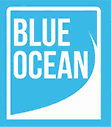
Marlow 12mm Blue Ocean Braided Dockline Mooring Warps
Marlow 14mm blue ocean braided dockline mooring warps, marlow 16mm blue ocean braided dockline mooring warps, liros 24mm super yacht dockline polyester mooring warps, liros 28mm super yacht dockline polyester mooring warps, liros 32mm super yacht dockline polyester mooring warps, liros 12mm classic braided dockline polyester mooring warps, liros 14mm classic braided dockline polyester mooring warps, liros 16mm classic braided dockline polyester mooring warps, liros 10mm braided dockline polyester mooring warps, liros 12mm braided dockline polyester mooring warps, liros 14mm braided dockline polyester mooring warps.

- Subscribe Now
- Digital Editions

Best dock lines: 6 of the best options for a secure mooring
We explain what to look for in a good set of dock lines and pick out some of the best options currently available
While most of us buy our boats for the enjoyment they provide out on the water, it’s an inescapable fact that virtually every leisure craft spends far more time on its berth than it does out at sea. It follows, therefore, that its dock lines – the ropes used to secure the vessel to its berth – need to be of the correct type and size to hold the boat fast whatever the conditions when their owners are far away, back home on dry land.
Whether your boat is moored shoreside, on a swinging mooring or a running anchorage, always consider the risks when leaving the vessel unattended.
While the size of the rope required will depend on the size of the boat ( see here for a useful sizing chart ) you will not regret upsizing to a larger rope than recommended whenever a major storm rolls in. It’s also worth considering doubling up on boat ropes , again to provide additional protection against the worst of the weather.
In terms of materials, the choice is principally between nylon and polyester, both of which are strong and durable and are offered in a vast array of colors and color combinations. Owners of classic craft may opt for a synthetic hemp-lookalike rope for an authentic look.
Finally, should you go for twisted or braided lines? In our view, braided lines tend to be the more attractive of the two, as well as having a better touch and feel due to their being the more flexible. Twisted rope, however, is less expensive, can be easily spliced and is slightly more stretchy than braided line.
Recommended videos for you
Whichever type and size of rope you choose, it also goes without saying they need to be maintained in good order – so do check frequently for fraying, wear and tear.
6 of the best dock lines
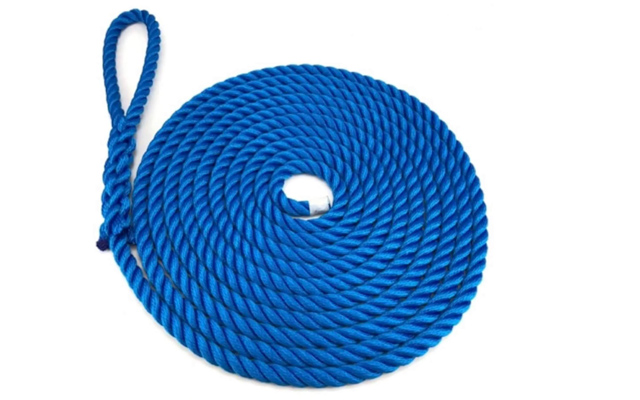
Softline multifilament mooring rope
Handmade in the UK, Softline multifilament mooring ropes are available in no fewer than ten colors. There’s a great choice of diameters too – from 8 to 24 mm in 2 mm increments – and the length can be specified as anything from 4 metres upwards.
Add to that a 3″ to 20″ soft eye at one end and heat sealing, a second soft eye or a thimble at the other, and you’ve got one of the most flexible and versatile line offerings on the market today.
Key properties of Softline multifilament ropes include high strength, UV- and abrasion-resistance, and zero water absorption.
Buy it now from ropeservicesuk.com
Note: We may earn a commission when you buy through links on our site, at no extra cost to you. This doesn’t affect our editorial independence.
Wycy mooring rope bungee.
Sold in packs of two, these bright yellow and green rippled WYCY docklines comprise a built-in hidden 10 mm shock-absorbing rubber band with a woven PE outer layer.
Suitable for a variety of applications – small boats, kayaks, personal water craft and so on – these ropes facilitate quick docking by virtue of their rust proof 316 stainless steel clip at one end and a spliced loop at the other.
The length of the bungee rope is 4 feet (124cm), extending to 5.5 feet (170cm) under load, making it easy to get on and off without having to pull the boat. I own a pair of these lines and find them extremely useful and of good quality.
Buy it now from Amazon
Rainier Supply Co two pack nylon dock line
Another twin pack offer, Rainier Supply Co’s dock lines are available in two formats; 15 feet of 3/8″ rope or 25 feet of 1/2″ rope.
Made of soft, double braided black nylon, these lines are easy on the boat, comfortable to handle, strong and resistant to oil, mildew and rot.
A 12″ eye is include in the price and both ends are heat treated and wrapped to ensure the line does not unravel. If you are looking for a ready made mooring line solution, these Rainier Supply Co own-brand ropes might just be the answer.

Greenever four pack double braided nylon mooring rope
With a breaking strength of up to 6,500 lbs these 1/2″ Greenever dock lines are suitable for boats from 20 to 30 feet.
Supplied in navy blue, the each rope features a 12″ eye loop at one end, with the bitter end being heat treated and whip locked. Made of marine grade nylon, their double-braided construction is durable and fray resistant.
Abrasion-resistant and with high levels of tolerance to UV, oil, rot and mildew, these packs of four lines provide a flexible mooring solution with each 15″ line coming in at a unit price of less than £15.00.
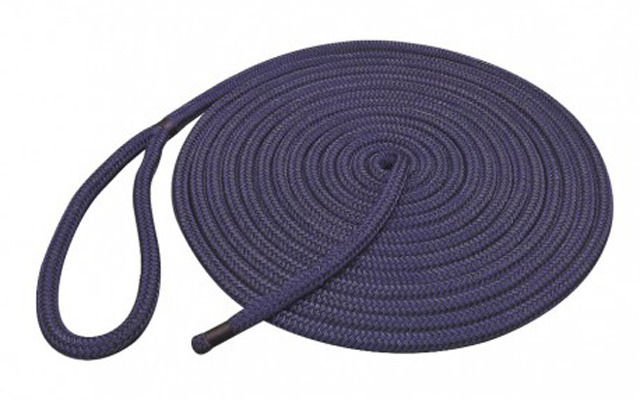
Spliced set length LIROS braided polyester dock line
Jimmy Green Marine is a well-established and respected supplier of ropes of all kinds. This particular offer – 16 mm Liros braided dock line polyester mooring warps – is available in 10, 12 or 14 metre fixed lengths in a choice of either navy blue or black.
But if that doesn’t suit, the company will custom build ropes to your specific requirements. Each rope in our featured offer has a 300 mm soft loop splice at one end and whipping at the other, with all ropes finished in house by the Jimmy Green rigging team.
Among the features and benefits of Liros braided polyester dock lines are high elasticity, high load capacity and excellent resistance to UV and abrasion.
Buy it now from jimmygreen.com

Hempex synthetic hemp mooring line
While the purists might sniff at the use of synthetic hemp, these strong, weatherproof Hempex mooring lines certainly do a job and do it well. In short, they are hard wearing polypropylene ropes which give a traditional look while offering all the advantages of a man-made fibre.
Our featured product is supplied by Dover-based ships chandler, Sharp & Enright via their eBay store, with synthetic ropes in 12 diameters from 3 mm to 28 mm on offer.
The minimum length of these beige color lines is 5 metres, with options all the way to 75 mm listed.
Buy it now from eBay
Didn’t find what you’re looking for? Head to Amazon’s dedicated boating page for more marine products.
The West Marine Spring sale is here! Great savings across chandlery items for motor boats
Palm beach boat show hotels for last minute local accommodation, looking for boot düsseldorf hotels look no further…, latest videos, sacs rebel 50 tour: the world’s most luxurious rib, fairline targa tour: sensational new british sportscruiser, navan s30 & c30 tour: exceptional new axopar rival, galeon 440 fly sea trial: you won’t believe how much they’ve packed in.
- My account My account Close Register Log in
You have no items in your shopping cart.
- AS9100, ISO9001 Certificate of Registration
- Quality Policy
- Quality Clauses
- Product Warnings and Information
- Training Programs
- Sling Inspection
- Repair & Testing
- Special Fabrication
- Product Bulletins
- Catalog Request
- General Information
- About Lift-It
- Team Lift-It
- Low Bid Insanity
- Associations We Support
- Product Warning
- 909-469-2251
- UHMPE Soft Shackles
- Tow Ropes - Endless with Formed Eyes
- Tow Ropes - Eye & Eye
- CornerMax® Sleeves
- CornerMax® Velcro Pads
- CornerMax® Pads
- Magnetic Corner Protectors
- Quick Sleeves - Felt
- Sewn Sleeves - Felt
- Quick Sleeve - Nylon
- Sewn Sleeve - Nylon
- Quick Sleeve - Web
- Sewn Sleeve - Web
- Sewn Chap Sleeves - Felt
- Quick Chap Sleeves - Cordura®
- Quick Tubular Sleeves - Felt
- Quick Tubular Sleeves - Nylon
- Quick Tubular Sleeves - Web
- Shackle Pin Protector Pads
- Wire Rope Saddle Protectors
- Eye & Eye Slings
- Polyester Max Edge™ Eye & Eye Slings
- Endless Sling
- Polyester Max Edge™ Endless Slings
- Basket Hardware Slings
- Choker Hardware Slings
- Reversed Eye Slings
- Wide Body Cargo Slings
- Attached Eye Cargo Slings
- Single Leg - Eye & Eye Sling Bridles (SLB)
- Double Leg - Eye & Eye Sling Bridles (MLB2)
- Triple Leg - Eye & Eye Sling Bridles (MLB3)
- Quad Leg - Eye & Eye Sling Bridle Assembly (MLB4)
- Endless Round Slings
- Twin-Path® Extra Sling, TUFXKS / TPXC
- Single-Path Check-Fast® High Performance Roundsling
- Twin-Path® Eye and Eye Slings
- Mine Tow Straps
- Single Leg - Adjustable Rope Slings
- Double Leg - Adjustable Rope Slings
- Polyester Four Leg - Adjustable Rope Slings W/Top Link
- UHMPE PROLINE12™ Rope Slings - Eye & Eye
- UHMPE PROLINE12™ Rope Slings - Endless
- Special Purpose Slings
- Single Leg Bridle Assembly
- Double Leg Bridle
- Three Leg Bridle
- Quad Leg Bridle
- Round Sling Bridle
- Chain Sling Bridle Assembly
- Wire Rope Bridle Assembly
- Wide Body Cargo Sling
- Attached Eye Cargo Sling
- Wire Rope Slings
- MG GrabiQ® Master Grab Single Leg Chain Sling
- MGD GrabiQ® Master Grab Double Leg Chain Sling
- TG3 GrabiQ® Top Grab Three Leg Bridle
- TG4 GrabiQ® Top Grab Four Leg Bridle
- Single Leg Chain Slings
- Double Leg Chain Slings
- Utility Slings
- Wind Industry
- Container Lifting Assemblies
- Marine Slings
- Rail Industry Slings
- Mining Slings
- Van Beest® G-4161 Screw Pin Anchor Shackles
- Van Beest® G-4163 Bolt, Nut & Cotter Anchor Shackles
- Van Beest® P-6033 Wide Body Sling Shackles
- Van Beest® G-5263 Bolt, Nut & Cotter Alloy Anchor Super Strong Shackles
- Van Beest® G-4263 Screw Pin Wide Mouth Shackles with Bolt, Nut and Cotter
- Crosby® G-209 Screw Pin Anchor Shackle
- Van Beest® P-4161T Theatre Shackles
- Fittings & Connectors
- Actek® Swivel Hoist Ring
- Actek® Metric Swivel Hoist Ring
- Actek® Stainless Swivel Hoist Ring
- Actek® Metric Stainless Swivel Hoist Ring
- Actek® Ultra Lifting Ring
- Actek® Metric Ultra Lifting Ring
- Actek® Sideload Hoist Ring
- Actek® Metric Sideload Hoist Ring
- Actek® Forged Swivel Hoist Ring
- Actek® Metric Forged Swivel Hoist Ring
- Crosby® S-279 Forged Machinery Shoulder Nut Eye Bolts
- Crosby® M-279 Forged Machinery Shoulder Nut Eye Bolts - Metric
- Crosby® G-277 Forged Shoulder Nut Eye Bolts
- Turnbuckles
- CM Masterlink
- CM Masterlinks With Subassemblies (And Flats)
- Masterlinks with Subassemblies (MT) Grade 100
- Crosby® Alloy Masterlink- A-342
- Material Basket
- Lifting Beams
- Modulift Spreader Systems
- Pallet Lifters
- Coil Lifters & Upenders
- Pipe & Manhole Handling
- Sheet Lifters
- Clamps, Grabs and Tongs
- Load Leveling Slings
- Beam Clamps
- Torque Wrenches
- Tuff Bucket®
- Tool Bag Bridles
- Tie Down Assemblies
- Truck Tie Down Assemblies
- NAS Strap Assemblies
- 1" - Buckles and Fittings
- 1 3/4" & 2" - Buckles and Fittings
- 3" & 4" - Buckles and Fittings
- Cargo Winches
- Accessories
- OZ Premium Chain Hoist
- Harrington CF Hand Chain Hoist - ½ to 5 Ton
- Harrington CB Hand Chain Hoist - ½ to 100 Ton
- Harrington CX Mini Hand Chain Hoist - ¼ Ton
- OZ Premium Lever Hoists - ½ to 30 Ton
- Harrington Hoist LB Lever Hoists - ¾ to 9 Ton
- Harrington LX Lever Puller - ¼ and ½ Ton
- CM 653 Lever Hoist - ¾ to 6 Ton
- CM Puller - ¾ to 6 Ton
- Electric Hoist
- Harrington PT Push Trolley - ½ thru 10 Ton
- OZ Beam Trolley with Clamp
- Oz Geared Beam Trolley
- OZ Push Beam Trolley
- Dynamometers
- Hydraulic Pad Eye Tester
- Personnel Baskets
- Outrigger Pads
- Superclamps
- Renfroe Plate Clamps
- OZ Beam Clamps
- Snatch Blocks
- Tilt Up Blocks
- Dyneema® Rope PROLINE12™ - UHMPE
- Samson Hardware
- Samson Polyester Rope
- Samson Nylon Rope
- Samson Rope Protection
- Samson High Performance Rope
- Double Braid Rope
- Single Braid Rope
- Continental Western Cordage
- UHMPE PROLINE12™ ROPE SLINGS - EYE & EYE
- UHMPE PROLINE12™ ROPE SLINGS - ENDLESS
- Military Cargo Nets
- Rope Cargo Nets
- Nylon Rope Nets
- Rigging and Crane Reference Cards
- Reference & Training Resources
- Rigging and Crane Handbooks
- Helicopter Long Lines
- Primary Covers for Helicopter Long Lines
- Helicopter Long Lines with Primary Cover
- Featured Products
Mooring Lines: Types, Applications, and FAQs
What is a mooring line?
Mooring lines, also known as mooring ropes, are an essential component of maritime operations, serving as the link between vessels and the shore or other stationary objects. They play a crucial role in ensuring the stability of ships, boats, and offshore structures. In this article, we will explore the various types of materials available, their benefits in specific applications, and address common questions that arise.
Types of Mooring Line Materials
Mooring lines, come in a variety of material types, and should be selected to suit specific applications and environments. Understanding the advantages and disadvantages of different materials is vital for ensuring the proper functioning of mooring systems. Here are the primary types of mooring lines:
UHMWPE – HMPE Dyneema® mooring lines.
Ultra High Molecular Weight Polyethylene (UHMWPE), specifically Dyneema®, has revolutionized the maritime industry with its exceptional strength, lightweight nature, and durability, making it an ideal material for mooring lines in marine applications. Dyneema®, known for its extremely high strength to weight ratio compared to materials like Nylon, Polyester and steel wire rope, allowing for mooring lines that are easier to handle yet can withstand heavy loads and harsh environmental conditions.
One of the key advantages of UHMWPE Dyneema® mooring lines is their lightweight construction. Compared to Nylon, Polyester and wire rope, mooring lines of the same strength made from Dyneema® are much lighter, making handling and deployment easier for maritime personnel. Additionally, its low stretch properties ensure minimal elongation during use, providing enhanced stability and reliability during mooring operations. UHMWPE mooring lines resistance to abrasion and damaging UVA-UVB radiation and low coefficient of friction further contribute to its longevity and excellent performance in marine environments.
Furthermore, UHMWPE Dyneema® exhibits excellent resistance to chemicals and marine organisms, reducing the risk of degradation over time. This makes it a cost-effective solution for mooring lines, requiring less frequent replacement and maintenance. As the maritime industry continues to prioritize efficiency, safety, and sustainability, the adoption of UHMWPE Dyneema® mooring lines represents a significant advancement in meeting these objectives.
Nylon Mooring Lines
Nylon mooring lines, often referred to as mooring line boat ropes, are popular in the maritime industry due to their strength, elasticity, and with double braid constructions their resistance to abrasion. They are commonly used for various vessel types, including small boats, yachts, and larger ships. The elasticity of nylon helps absorb shock loads, making it ideal for situations where vessels may experience sudden impacts or dynamic forces. Many times, if the entire line is not made from Nylon we will use shorter sections linked to HMPE mooring ropes with the Nylon section acting as a shock absorber.
Polyester Mooring Lines
Polyester mooring lines, also known as marine mooring ropes or marine mooring lines, offer comparable strength to nylon and available with double braid construction and have superior resistance to UV degradation when compared to Nylon. These lines are suitable for long-term mooring applications, such as permanent installations in harbors and marinas. Polyester lines are known for their durability and resistance to stretching at nearly half the elongation of Nylon, making them a reliable choice for mooring large vessels.
Polypropylene Mooring Lines
Polypropylene mooring lines, often used for mooring smaller recreational boats, are lightweight and have excellent buoyancy. While they lack the strength of nylon or polyester, they are well-suited for temporary or short-term mooring needs for smaller vessels. Additionally, polypropylene lines are cost-effective, which makes them a popular choice for light-duty applications or as backup lines on vessels.
Wire Mooring Lines
Wire mooring lines, also known as mooring cables, are constructed from stainless steel or galvanized steel and are incredibly robust, making them suitable for heavy-duty applications. They are commonly used in offshore oil and gas platforms, large commercial vessels, and ships that require high tensile strength and minimal stretch. You will find a variety of mooring lines and rope for sale by clicking here
Applications of Mooring Lines
Mooring lines, including mooring ropes for tug boat operations and ships, are deployed across a wide range of maritime and offshore applications. Understanding the specific uses of mooring lines is essential to ensure safe and efficient operations in these scenarios. Here are some common applications of mooring lines:
Dock and Harbor Mooring
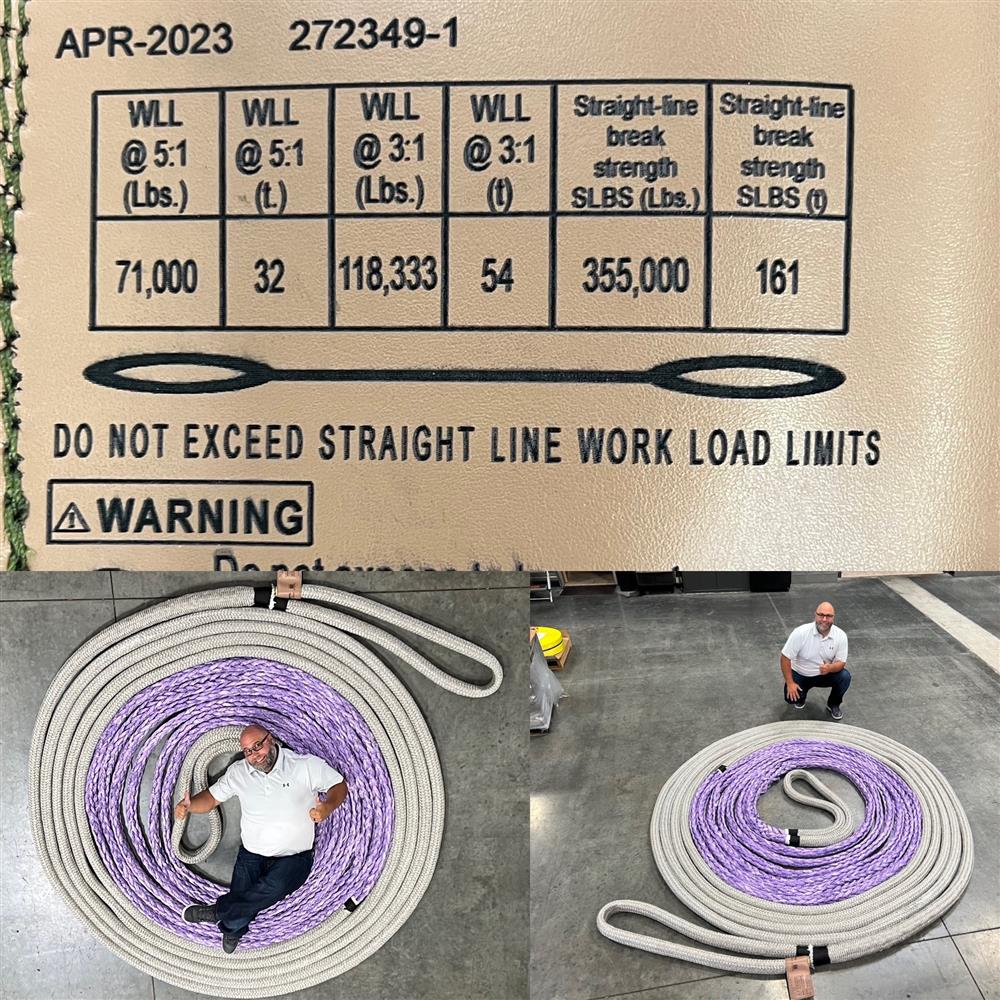
Anchoring and Mooring Buoys
Buoys, including boat mooring ropes, are crucial for marking channels, hazards, and providing anchorage points for vessels. Mooring lines are used to anchor these buoys in position.
Offshore Oil and Gas Platforms
Offshore drilling platforms rely on robust mooring lines, typically wire lines or ship mooring ropes to keep the platform in position, even in harsh sea conditions. These lines are critical for stability of the entire platform and the crew working on it.
Towing and Salvage Operations
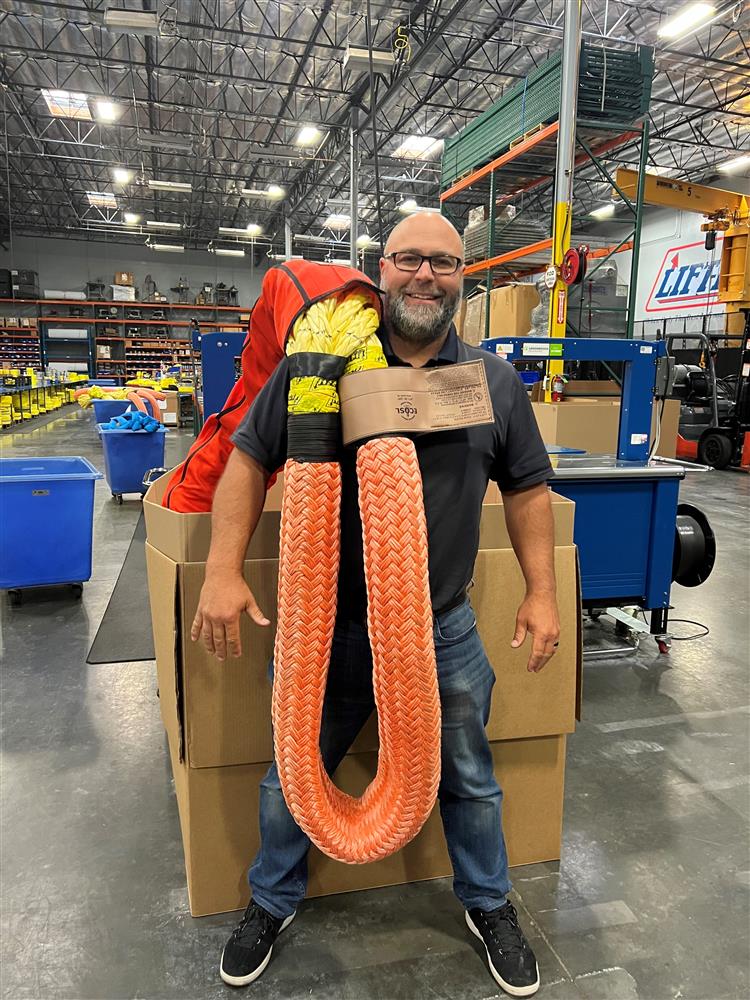
Frequently Asked Questions about Mooring Lines
Understanding mooring lines involves addressing a variety of questions that often arise among professionals and enthusiasts in the maritime and boating communities. Let's explore some frequently asked questions and their answers.
How do I choose the best mooring line for my application
Selecting the appropriate mooring line depends on several factors, including the size and weight of your vessel, the mooring environment (harbor, offshore, or buoy), and the expected loads. Nylon and polyester lines are excellent choices for most recreational boats due to their strength and elasticity. Ensure the line's diameter and length are suitable for your vessel's size and the mooring conditions.
How often should I inspect and replace mooring lines?
Mooring lines should be regularly inspected for signs of wear such as cutting, chafing, deformation, anomalies in shape and UV damage. The frequency of inspection depends on factors such as environmental conditions and usage. As a general rule, recreational boaters should inspect their mooring lines before use and a more detailed inspection not to exceed 12 months and replace them when they show significant signs of wear. For commercial and offshore applications, more frequent inspections may be necessary depending on the environment, duration and severity of conditions. Training, knowledge and skillset are required for rope inspection and should always be performed by a qualified person.
What is the proper way to store mooring lines when not in use?
Mooring lines, including mooring rope for a boat, should be stored in a cool, dry place away from direct sunlight and moisture. Coil the lines neatly to prevent knots, kinks or twists, which can weaken the line over time. Regularly clean and inspect the lines before storing them, and avoid leaving them exposed to the elements for extended periods. When using cleaning agents ALWAYS consult the rope manufacturer for guidelines and direction with detergents and cleaning agents. In most cases mild agents such Dawn® dish soap and Simple Green® can be used. AVOID all bleaching and citrus based cleaning agents.
Can I use a combination of mooring line rope types for mooring ships?
Yes, it is possible to use a combination of mooring line rope types such as Nylon, Polyester and UHMWPE to achieve the desired balance of strength, elasticity, and cost-effectiveness. For example, you may use nylon lines for shock absorption and UHMWPE Dyneema® lines for their buoyancy in a buoy mooring system. Ensure that each line is appropriately sized for strength and spatial relation ensuring secure connection.
What is the breaking strength of a mooring line, and how is it determined?
The breaking strength of a mooring line, including ship mooring rope, refers to the maximum load the line can withstand before it breaks. It is determined through testing by manufacturers and is usually indicated on the line's label or packaging. The breaking strength depends on the material, diameter, and construction of the mooring line. It is essential to choose a mooring line with a breaking strength that exceeds the expected loads. This process uses the “MBS” or minimum breaking strength divisible by the “FOS” factor of safety also referred to as “Design Factor”. Through this process the Qualified person derives the “WLL” work load limit which shall never be exceeded.
- High Tensile Forces: Mooring lines, especially those made from materials like UHMWPE Dyneema, can experience high tensile forces during operations. If a rope breaks under tension, the release of energy can result in a dangerous snap back, posing a significant risk to anyone in its path.
- Whipping Effect: The snap back of a broken mooring line can create a whipping effect, which can be exaggerated when going around bollards or cleats, causing the loose end to rapidly move in unpredictable directions. This may lead to severe injury or death as individuals in the vicinity may be struck by the recoiling line.
- Projectile Hazard: In the event of a mooring line breaking, broken fragments or the entire line can become projectiles, posing a threat to personnel, equipment, and nearby structures. The force with which these projectiles travel can cause substantial damage.
- Abrasion and Wear: Mooring lines are subjected to constant environmental stress, including abrasion and wear. Over time, this can weaken the integrity of the ropes, increasing the likelihood of breakage. Regular inspection and preventative maintenance such as installation of chaffing protection are crucial to identifying and addressing potential issues before they escalate.
How do I attach a mooring line to my vessel and the mooring point?
The method of attaching a mooring line to your vessel and the mooring point varies depending on the specific hardware and setup. Common methods include using cleats, knots (such as the bowline or cleat hitch), and specialized hardware like shackles and thimbles. Follow the manufacturer's recommendations and best practices to ensure secure and reliable attachments.
Are there any eco-friendly mooring line options?
There is a growing interest in eco-friendly and sustainable alternatives to traditional mooring lines, including mooring lines for ships. Some manufacturers now offer mooring lines made from recycled materials or biodegradable options. These eco-friendly lines aim to reduce the environmental impact of discarded or lost mooring lines in oceans and waterways.
Mooring lines, including mooring ropes for boats and ships, play a vital role in maritime operations, ensuring the stability of vessels in a wide range of applications. Understanding the types of mooring lines available and their appropriate applications is crucial for anyone involved in boating, shipping, or offshore industries. By addressing common questions and providing insights into mooring line selection and maintenance, we hope to enhance your knowledge and promote safe and efficient mooring practices in these vital sectors.
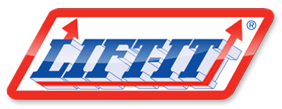
- Custom Design & Fabrication
- Product Information Bulletins
- Shopping cart
- Web Sling Inspection
- 1603 West Second Street Pomona, CA 91766
- [email protected]
Payment options
GeoTwin Polyester
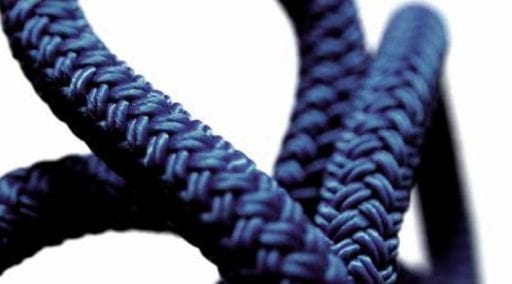
GeoSquare Polyester
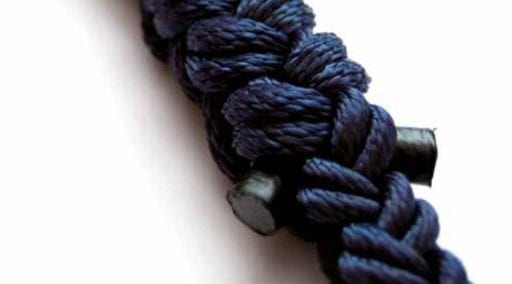
GeoOne Polyester
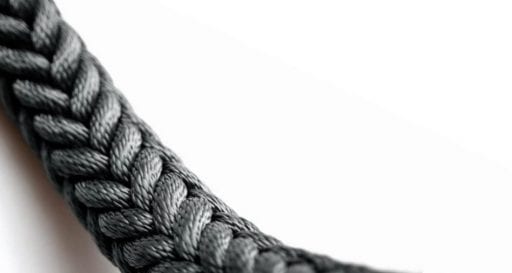
Dyneema X-Twin
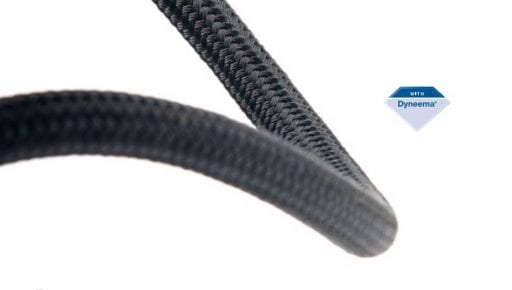
Dyneema MegaTwin Flexx
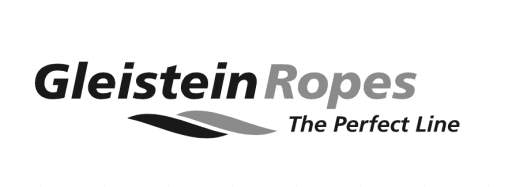
check out our mooring accessories
Stopperlines, fenderlines, heaving lines, snubber lines, tender whips, our products.
Your name *
Your phone number
Your email address *
Your inquiry
- Scroll to top

S/Y Mooring line
01. S/Y Mooring line
S/Y Mooring Line mooring ropes for Super Yacht
Armare Ropes has developed a range of mooring ropes dedicated specifically to Super Yachts. These ropes ensure very high breaking loads without increasing the diameter and as a consequence the weight. All the ropes of the line are highly customizable, with splices, protections or with the application of thimbles and other terminals according to specific requests.
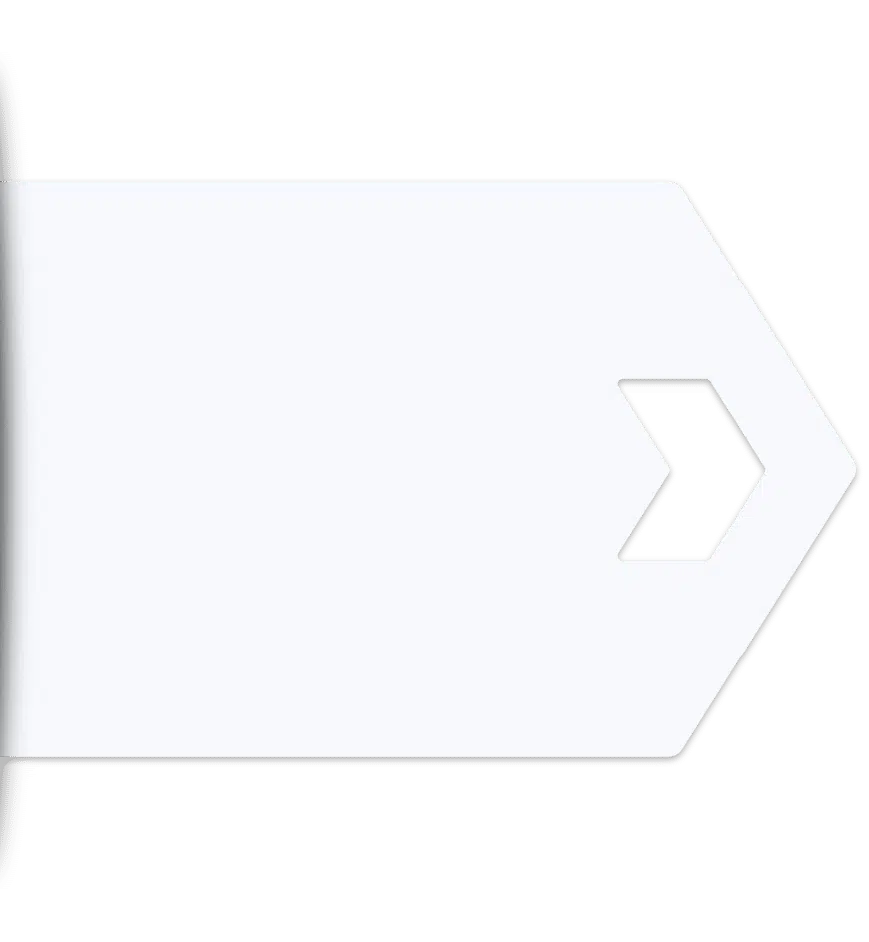
Rope Configurator
The perfect rope step by step with the exclusive Armare configurator

Super Yachts Mooring line
Complete range of mooring and anchoring lines for Super Yachts, characterized high performance, excellent durability and a wide range of customization options.
Special handcrafted finishes and protections, custom colors, high breaking load and lightness of the ropes are the main characteristics of this line, whose products are intended for mooring and anchoring of Super Yachts, when extraordinarily high loads are required.
The line includes floating ropes and also ropes in high visibility colors. All the products of the line can be completed with fine manual finishes, stainless-steel thimbles, leather protections.

Cables & Rigging
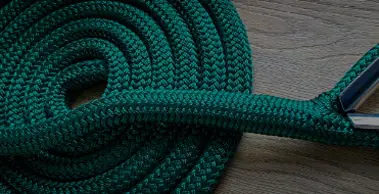
S/Y mooring line
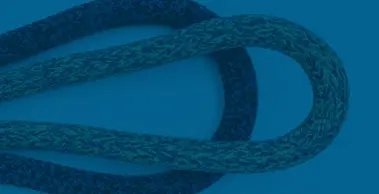
Armare Store
Floating ropes.
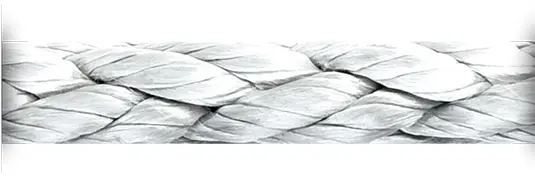
Secur Line Balanced twist 8 strand braid made with 100% Dyneema ® SK78 and PU Coating. Ideal for emergency anchoring and long mooring from boat to land and as towing line. Made of 100% Dyneema ® SK78 it assures high breaking load, lightness, low elongation, almost zero water absorption, high visibility of the rope and high resistance to abrasion and cut.
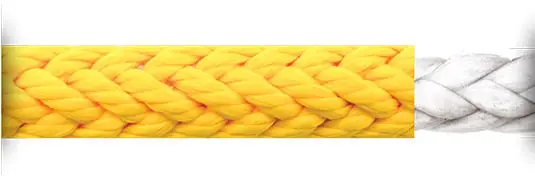
Novus Line Double Braid – 100% Dyneema® SK78 core, 100% H.T. Polypropylene cover. The latest new rope concept for floatable moorings and towing lines. Novus Line is a new generation rope made with a Dyneema® SK78 braiding core, which assures the 100% of the load and protected and covered by a 12 strands braid in H.T. Polypropylene with UV treatment. The result is an incredible floating rope extremely flexible and easily maneuverable, with high breaking strength, light weight, low water absorption. It assures a good protection from accidental cutting and is spliceable with a right technique.
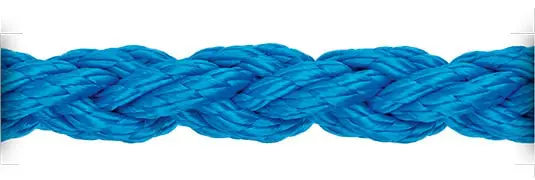
Square Line PP 8 strand braid in H.T. Polypropylene with UV treatment.Multi-use floating line, for long moorings and towing.

Conventional ropes
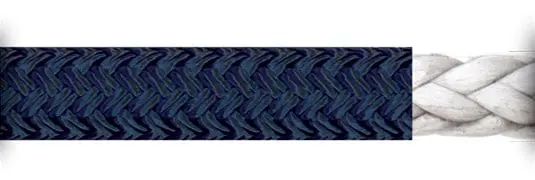
Storm Line Plus Balanced twist Dyneema® braided core, Polyester cover. It brings a significant improvement to the lives of the crew, ensuring very high breaking load and small diameters, extreme safety and low water absorption. Furthermore, thanks to the core in Dyneema®, the weight is halved if compared to ropes with equal load in Polyester/ Nylon. The choice of Storm Line Plus for the mooring of your boat provides an economic benefit over time, thanks to the extraordinary durability
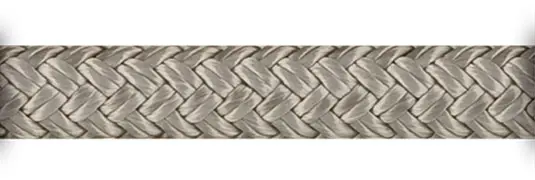
Storm Line Balanced twisted Polyester braided core, Polyester cover. Ideal for Super Yachts but also for emergency or long moorings of small and medium sized boats.
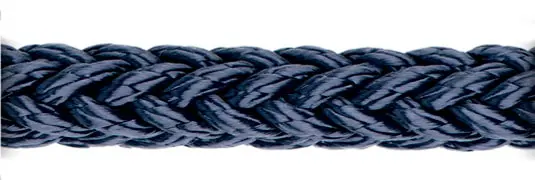
Round Line 12 strand braid in Polyester. For the mooring of small boats to Super Yachts. Always smooth, even after prolonged use. Easy to splice.
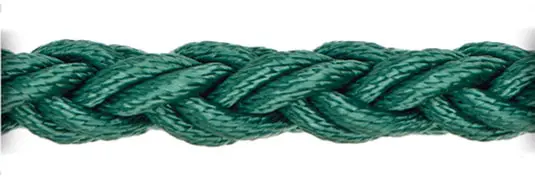
Square Line 8 strand braid in Polyester. Commonly used for the mooring of all types of boats up to Super Yachts, anchoring as well as temporary and long moorings of medium and small boats.
Super Yachts
The selection of the Super Yachts line, with all the products and useful insights. Click the link below to download the PDF catalogue.
Additional finishes
The ropes of the S/Y Mooring line can be completed with many additional finishes. These special processes are handcrafted directly by Armare, at its laboratory.
Splices and special finishes can be customize directly online by accessing the Armare Ropes Congurator.
In addition to the ones available in the catalogue, Armare can perform special finishes on request: contact our technical department for advice.
- Splicing on stainless-steel thimble
- Handmade finishing with Cordura® heavy fabric
- Handmade leather finishing
- Splicing with loop of every size
- Possibility of embroideries on every type of protection
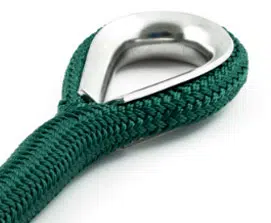
Stainless-steel thimble without protection
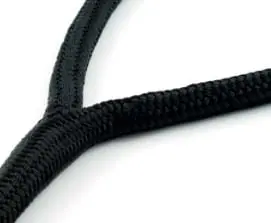
Loop without protection
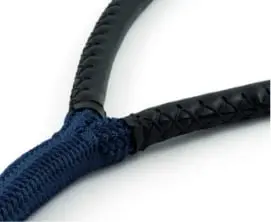
Loop with leather protection
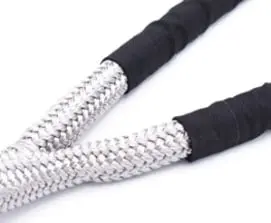
Spliced loop with Cordura® fabric heavy protection
Standard colours of the ropes

Special colours of the ropes

Silver Grey

English Green

Leather protections

Cordura® heavy fabric
Composite Cables Textile Standing Rigging
Standing rigging systems in PBO-Zylon®, code cables, no-torsion cables, strops and steel fittings. Click the link below to download the PDF catalogue.
Best Sellers
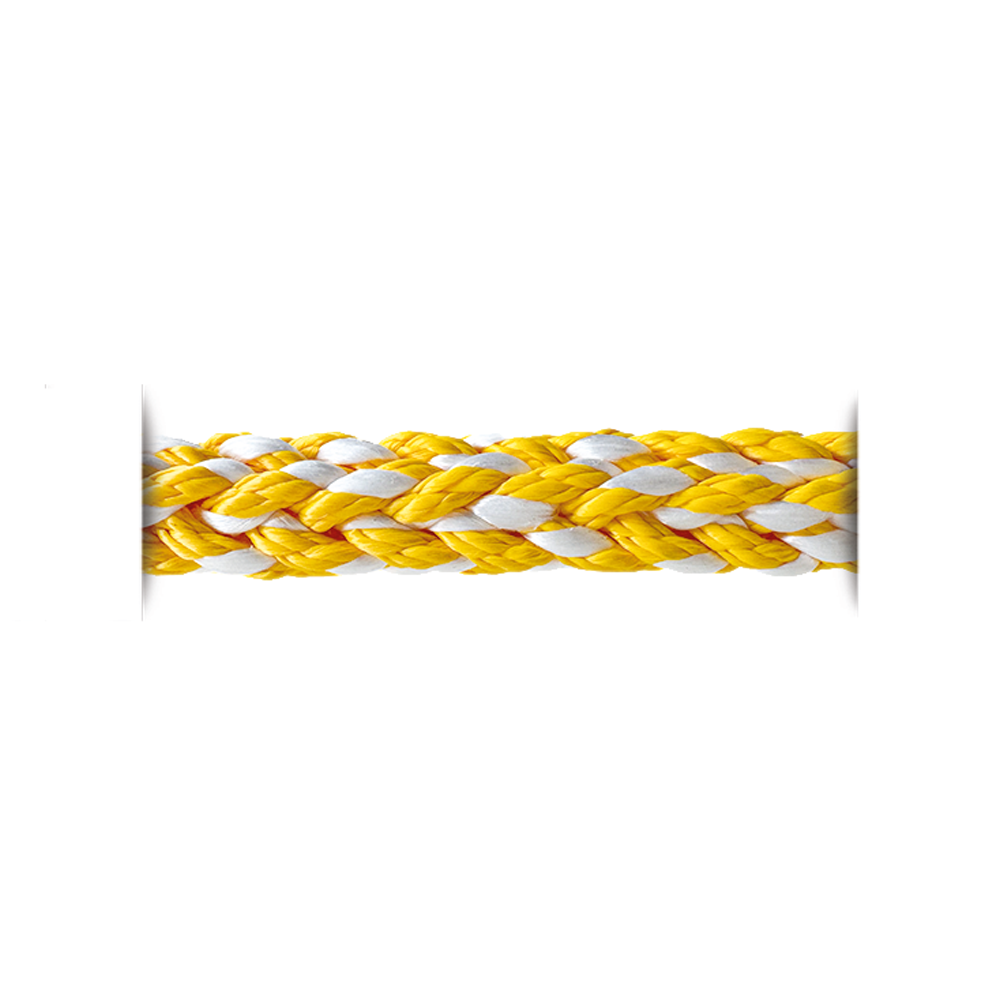
Mooring floating rope
Novus line dyn+pp, 8-strand braid in dyneema® sk78 + polypropylene h.t..
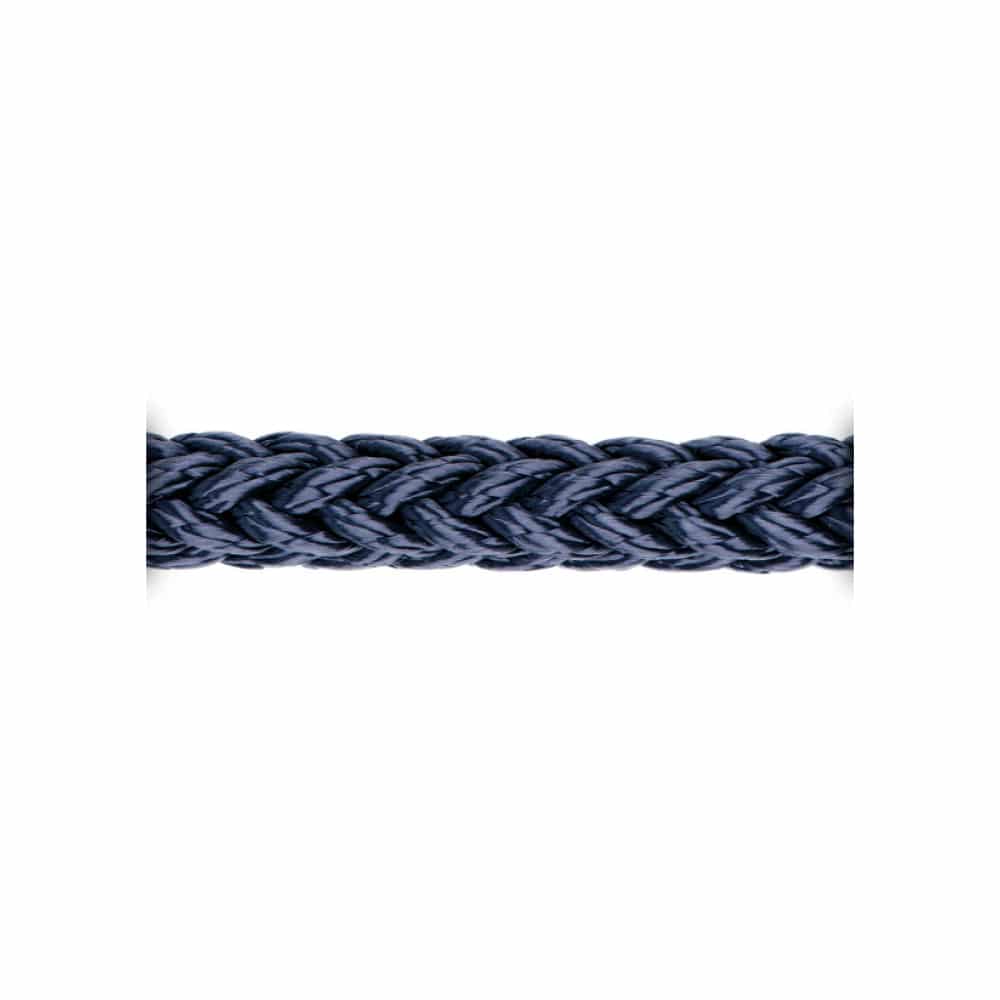
Mooring rope
12 strand braid in polyester, sku: na40_mooring.
12 strand braid in Polyester. For the mooring of small boats to Super Yachts. Always smooth, even after prolonged use. Easy to splice.
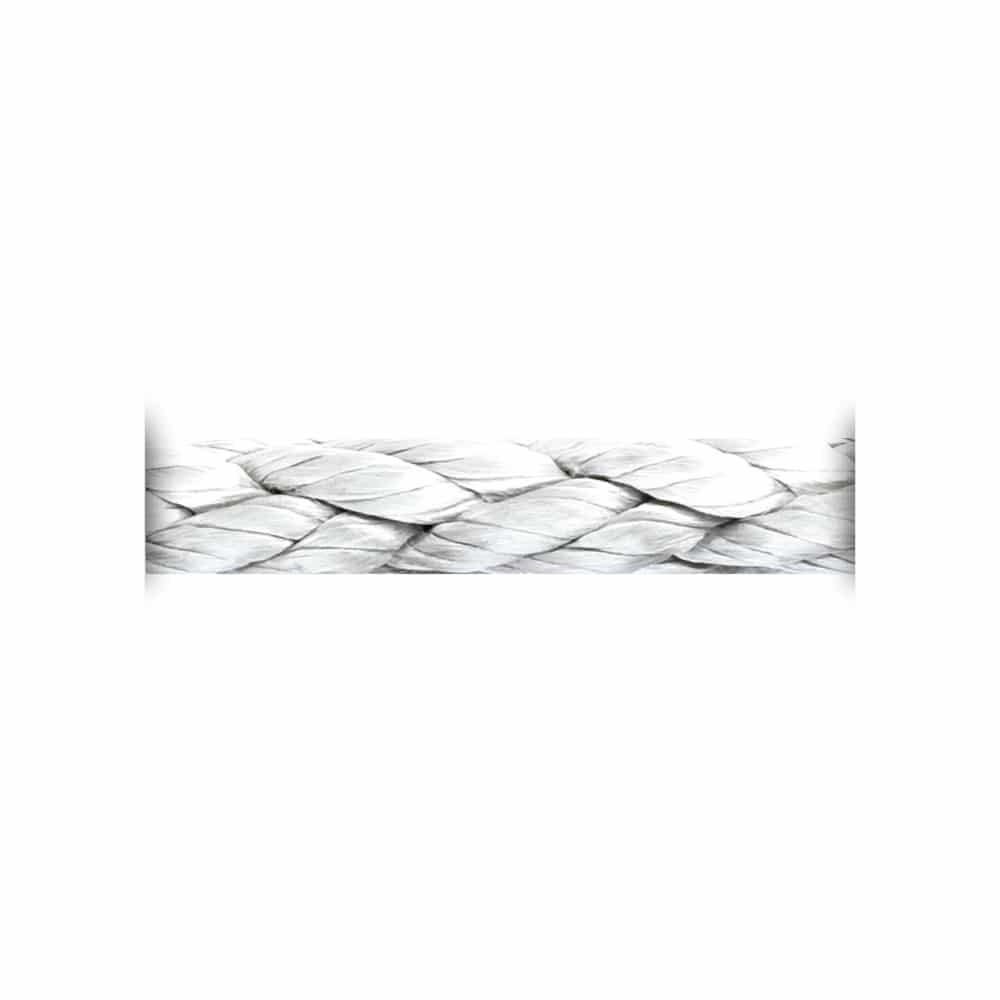
100% Dyneema SK78 + PU
Floating rope, ideal for emergency anchoring and long mooring from boat to land and as towing line. Made of 100% Dyneema® SK78 it assures high breaking load, lightness.
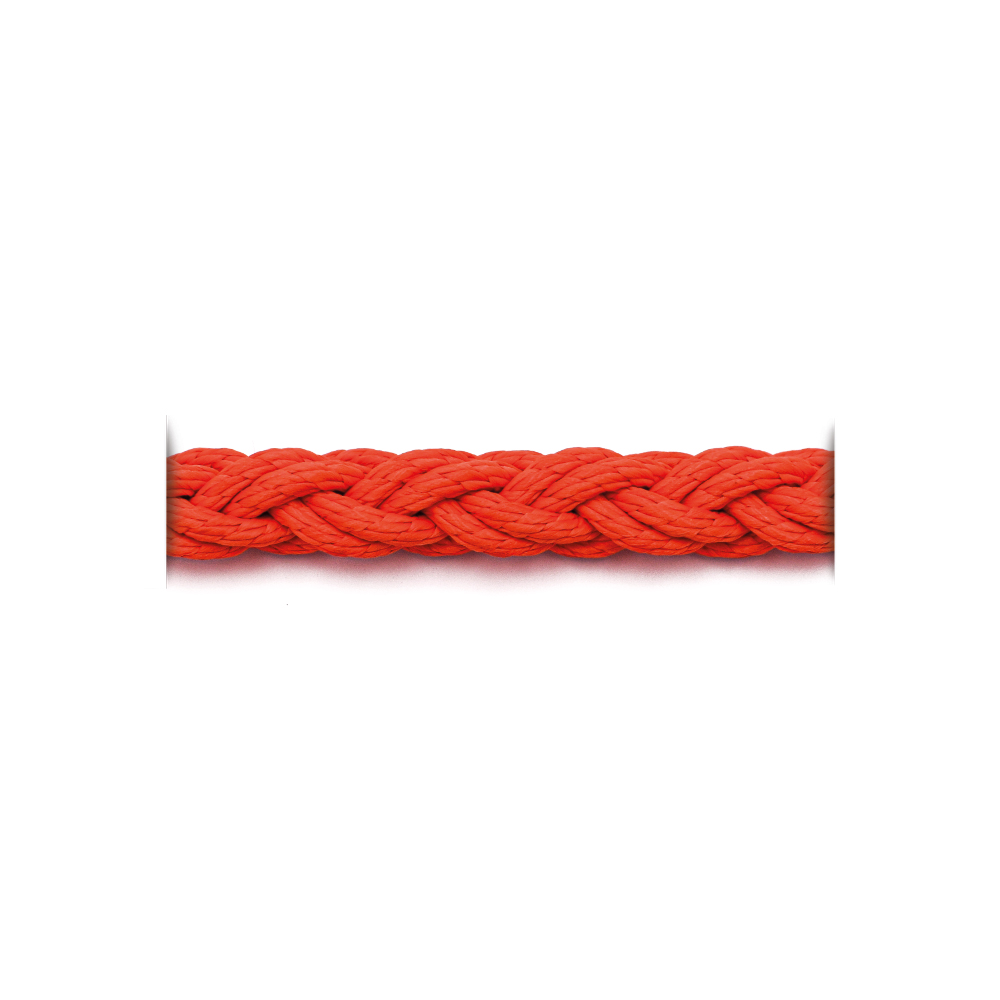
Square Line PP
H.t. polypropylene with uv treatment.
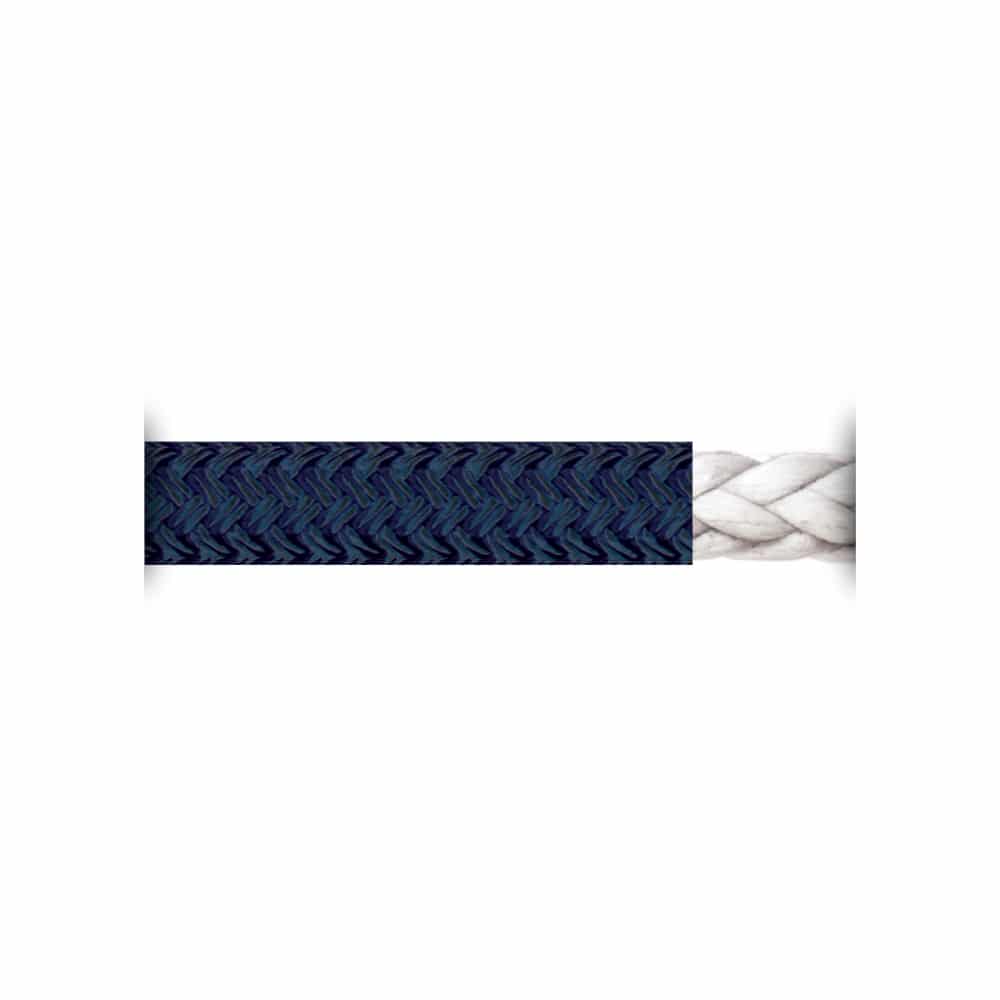
Storm Line Plus
Core dyneema®, sku: na90_slp, related news, armare ropes for super maxi spirit 111 "geist".
Thanks to the collaboration with our valuable partner ONE Palma, we are proud to have supplied the running and standing...
Arca SGR at Bernetti Trophy and Barcolana 55 with Armare Ropes
On Sunday, October 1st, Arca SGR of “Fast and Furio Sailing Team” emerged victorious at the 52nd Bernetti Trophy. This...
Storm Line Plus and Stretcher Loop: union makes the strength
Mooring ropes made with technical fibers, characterized by high breaking loads and low elongation, require the use of “shock absorbers”...
New cables for the S/Y Piropo by Perini Navi
Armare Ropes has manufactured and supplied a new set of main runners and mizzen backstays for the S/Y Piropo, a...
Maxi Jena: new standing rigging by Armare Ropes
Maxi Jena: a page of history of Slovenian sailing and the Barcolana. An extraordinary sailing boat that has undergone several...
A podium entirely "branded" Armare Ropes at the Barcolana 53
Arca SGR won the 53rd edition of the Barcolana, ahead of EWOL Way of Life and Maxi Jena. A podium...
Way of Life - former Morning Glory - wins with Armare Ropes
A new textile forestay in PBO for the 86 Reichel Pugh Way of Life – former Morning Glory – which...
Pendragon: Line Honors in the Rounditaly Genoa - Trieste
Less than a week to go around Italy on a sailing boat. Departure from Genoa on September 16th, the maxi...
Yachting Monthly
- Digital edition

Mooring: A guide to coming alongside, rafting & traditional skills
- Norman Kean
- September 24, 2021
Understanding traditional mooring skills like how to tie up alongside a wall or between piles, raft up or even dry out can give you the option of escaping the marina ‘car parks’, says Norman Kean

Learning traditional mooring skills will open up cruising grounds. Credit: Alamy Stock Photo
With most leisure craft now accommodated alongside marina pontoons , sailors may be wary of attempting traditional mooring techniques to secure a boat, despite many of them being easy if you know how.

Norman Kean, Fellow of the Royal Institute of Navigation, edits the Irish Cruising Club’s Sailing Directions . He and wife, Geraldine sail a Warrior 40
Some mooring tricks are not to be recommended, however. We used to own a 17-tonne steel ketch whose deep-fin keel had a wide flat base. The previous owners anchored over a sandy bottom then fell asleep in the sun on a falling tide. They woke to find the boat upright on her keel in 2ft of water.
She did it again once for us, but we knew the tide had only 3 inches to drop when she ran aground. But let’s describe mooring techniques that are safe and commonly practised around the British Isles .
Mooring alongside a solid pier
On a quay wall, the issues are rise and fall, swell, tidal or river current, and the shape of the pier surface in contact with the boat.
Bow and stern lines need to be taken well forward and aft respectively along the pier; the more the rise and fall, the further in each direction.
The idea is to keep the angle of the lines shallow so that they don’t get too tight and don’t need to be adjusted. Spring lines would need to be equally long, and if you look at how any local fishing boats are tied up you may find they don’t have any.

When mooring alongside a quay, use long bow, stern and spring lines. The greater the tidal range, the longer they will need to be. Credit: Phyllida Stone
You may also find that they tend to lie away from the quayside in any tide ; this can be achieved by judicious lashing of the helm, so that the tidal or river stream works to your advantage. It’s trial and error, so try it on both flood and ebb if possible.
Piers and quaysides come with a variety of surfaces. The best, as at Scalasaig in Colonsay, is close-planking in wood with recessed ladders. Wicklow has an interesting arrangement with wide horizontal planks at intervals with three-inch gaps, so the quay wall has, in effect, a continuous ladder.
The usual surface is stone or concrete, with steel ladders set in recesses. All of the above require good conventional fendering .

Fendering arrangements need to be adapted. Protrusions like ladders or piles are not easy to protect against and are best avoided. Credit: Graham Snook/Yachting Monthly
Ladders also provide a very handy aid to mooring alongside. One crew member, standing amidships, grabs the ladder and ties a midships line round it, then clambers up to catch the bow and stern lines.
Once the midships line is tied, the boat is secured and can easily be controlled from the helm while the bow and stern lines are made fast. However, beware of that midships line. It’s temporary. If you forget about it and the tide’s falling, you could easily get ‘hung up’, dangling from it; not a good place to be.
If the tide’s rising, you could just as easily find the boat listing mysteriously towards the wall. Because the rope isn’t obvious, that’s much more difficult to diagnose – been there, done that. I was once in the Confessional column, entitled ‘Hung Down’. I still treasure the Mike Peyton cartoon.
Of course, short bow and stern lines can also leave you hung up.
But given that you have long lines fore and aft, how do you deal with getting ashore and back aboard, when otherwise your aim is to have the boat lie away from the pier?

Fenderboards are essential for quays with piles or rough surfaces. Ideally, leave ladders clear for others to see. Credit: Graham Snook/Yachting Monthly
Double a line through the ladder at some convenient point and leave it slack or completely loose at one end, but brought back aboard with sufficient length.
Obviously this is more challenging with a north Brittany range and it may need to be moved up and down a few times, but with a more modest rise and fall it’s not difficult.
More challenging surfaces include rough stone, which just demands better fendering, and projecting ladders that are not set into recesses.
The answer to those is to put the bow or stern beside them, rather than the midships. The getting-ashore line is a little trickier but it can be worked out.
The important thing is to be sure that when you leave the boat or settle down for the night, the boat can’t come into contact with the ladder. One way or the other, if it happens to be the only ladder, it’s also not good form to block it.

Rigging fenders horizontally helps against vertical hazards such as ladders. Credit: Graham Snook/Yachting Monthly
Adjust lines to pull the boat out of the way, once you’re done with the ladder. Piled structures, or steel cofferdam facings, are much trickier.
A fender board is essential here but depending on the spacing of piles and the rise and fall, that may not be enough – a piled structure is best avoided. Given that with long slack bow and stern lines the boat can move a bit fore and aft, it is important to avoid a pier experiencing swell.
Surge can snap mooring lines like thread, and the merciless jolting, snatching and creaking makes life very uncomfortable.

Drying moorings, whether for residents or visitors, tend to be much cheaper, making bilge-keelers a more affordable option. Credit: Alamy Stock Photo
Fenders may pop out upwards or sideways with rise and fall or surge, and if the boat can’t be persuaded to lie away from the wall, there’s no easy answer short of running a line from the bottom eye of a fender right under the boat and securing it tight on the opposite side.
Unless, that is, you’re carrying one or two old tyres (wrapped in some kind of fender socks), which don’t tend to pop out.
Mooring between piles or alongside a boom

A number of small harbours or rivers still offer pile moorings. Credit: Alamy
With piles, it’s unwise to secure the bow line first. Approach from the leeward side and against any current or tidal stream, with a line attached to the aft mooring cleat and brought amidships.
Bring the boat close enough to secure the end of the stern line to the first pile.

Adjust lines to put the boat in the middle. Credit: Sarah Norbury
Then motor slowly up to the second pile (taking care to keep the slack of the stern line away from the prop) and secure the bow line, and finally adjust the lines to hold the boat midway between the piles.
Much the same technique is advised with mooring alongside a boom, but the windward side is easier because the securing points at each end are harder to reach.

Mooring tip: Getting a line through a ring on a pile isn’t easy. Go against the tide and start with the stern line.

18 boats rafted at an Irish Cruising Club rally. Note the raft is moored to the pier on the left and the buoy on the right, with the centre trot tied to the ones on either side
Rafting up is a handy way of avoiding having to deal with rise and fall, and is often the only option for an alongside berth when piers and pontoons are crowded.
It can be a sociable experience; we have made many friends in raft-ups. There are some basic rules.
- Always try to raft up to a boat that is bigger than yours. A heavy boat rafted outside a smaller, lighter one can place undue pressure on the smaller boat’s hull and mooring lines.
- Ask permission whenever possible. If rafting to a fishing vessel, find out when she’s leaving – it could be 0400. If there’s nobody aboard, ask around the harbour.
- Even if the inside boat is well fendered on its outboard, set up your own fenders too.
- Put out shore lines of your own fore and aft, and bow and stern lines and springs to the boat inside you.
- When crossing another yacht to get ashore, always walk round the foredeck, forward of the mast.
- Always be prepared to allow a boat on the inside to leave.
- It is ungenerous and unseamanlike to refuse to have another boat raft up to you, provided that the above conditions are met, and the raft isn’t big enough already.
- If you’re leaving early, let the new arrival know.
- Fenders hung on your seaward side say ‘You may raft up to me’.
Getting ashore can sometimes be a problem, particularly if rafted to a large fishing vessel, or several of them.
If they are lying away from the wall it may not be possible to heave the whole raft close enough to reach the ladder safely.
It can also be a matter of clambering up tyre fenders hung from the pier.

All lines rigged correctly, with the raft sitting off the wall. Getting ashore may be easier by dinghy. Credit: Lester McCarthy
To allow a boat inside you to leave, the usual procedure is to take your bow and stern lines to the pier or pontoon (or the boat nearer it), with either your stern line being led ahead of the leaving boat or your bow line led astern of her.
The leaving boat then lets go all your lines aboard it and slips out: you take in the slack on your lines and reset spring lines.
If conditions are difficult or all else fails, simply cast off and come alongside again once the leaving boat has gone.

Mooring tip: Whenever possible, rig shorelines of your own to avoid stressing the inside boat’s deck fittings. Credit: Ben Meakins
Some very big rafts can be organised – I’ve seen 15 boats rafted up in one trot at a big race event – but normally, three or four is a comfortable limit.
Sometimes a ‘sunflower raft’ is organised at a big rally, with boats rafted in a circle bows-out and anchors set by every third or fourth boat.
A sunflower of 191 is believed to be the record, set by the Clyde Cruising Club in 1985 in Loch Drumbuie in Argyll.
Mooring skills: Drying out
Bilge keels.

Bilge keelers can access harbours others can’t, but still require an even and flat seabed. Credit: Alamy Stock Photo
A bilge keel boat clearly has the advantage of being able to dry out upright. The dos and don’ts are fairly obvious:
- A flat, or nearly flat, regular surface is called for – hard sand is ideal. Rock and boulders are to be avoided. Mud is fine so long as you have no plans to get ashore.
- There is a risk of bumping on the bottom as the boat is drying out and refloating, if there is any swell, or passing traffic creating wash. Not a problem in soft mud.
- Consider how you’re going to get off and on the boat. Will you need a ladder?
- If the surface is a bit muddy, leave a bucket of water handy to clean your boots when you come aboard.
- If leaving the boat, lay out an anchor, just in case you don’t get back in time.
- Remember that when the boat’s dried out, you won’t be able to use the heads!
Lifting keels

Mooring tip: Keep revs low and check strainers to prevent debris being sucked into the engine cooling. Credit: Alamy Stock Photo
Like bilge keels, a lifting keel allows the boat to dry out upright. All the same considerations apply as for bilge keels, but also make sure the rudder will be OK.
On a muddy bottom, the mud can start oozing up into the heads and the engine cooling intake, and it’s wise to close seacocks – but don’t forget to open them again!
Remember that when motoring in very shallow water with the keel up, sand and mud can get sucked into the engine cooling water strainer.
Keep the revs down and check the strainer afterwards.

Legs allow fin-keeled boats to dry out on seabeds firm enough to support the load. Credit: Alamy Stock Photo
If your boat is equipped with legs, most of the same principles as for bilge keels apply. A soft muddy bottom is unsuitable.
The boat should rest on one leg and the keel, so if the legs are adjustable, make sure they aren’t too long.
If the bottom is a bit soft, a leg can be inserted into a metal bucket on a lanyard to spread the load.
If there’s a preferred side of lean, put heavy weights like water or fuel cans on that side of the boat.
Drying out against a quay wall

Drying out alongside requires someone aboard to adjust lines, but lets you stay in harbours away from the crowds. Credit: Alamy Stock Photo
This technique is handy for quick underwater maintenance jobs – clearing a fouled prop, scrubbing and even antifouling .
It can have its drawbacks if you’re planning to stay aboard overnight, though.
A suitable bottom is always required; hard sand or concrete are ideal (a slipway is usually OK if you’re not going to block it), or shingle.
Mud can be difficult in terms of getting the work done. The bottom shouldn’t slope away too steeply from the wall, and there clearly shouldn’t be any obstructions like large stones or concrete blocks.
In an unfamiliar place, local knowledge is essential in this regard (I once asked a fisherman if a spot on the wall would be a good place to dry out and he said, ‘Ah no, you’d want the hospital for that’).

Mooring tip: On a fin-keeled boat, tight bow and stern lines protect the boat from tipping forward or aft. Credit: Theo Stocker
You need some means of getting down there when the tide’s out, but that’s not usually a problem.
For some jobs, the boat doesn’t have to dry out completely.
The underwater profile of the boat needs to be considered. A long keel boat will always dry out safely but may lie bows-down.
Continues below…

How to raft up safely and securely
James Stevens looks at the seamanship and etiquette needed to raft up and identifies the benefits and pitfalls of coming…

Going astern with twin, long and fin keels
Different hull types demand different tactics. Tom Cunliffe shows you how to avoid embarrassment next time you’re at the helm…

Sailing around Britain and Ireland: All you need to know
Sailing around Britain and Ireland and into its nooks and crannies is always an interesting endeavour. You get to know…

How and where to go wild cruising in the UK
Planning to spend the night away from crowded waters can be truly rewarding but preparation is essential before you go…
With a fin keel , the boat will almost always sit happily on it, but with a very narrow fin (fore and aft) it may be wise to keep heavy weights and people away from bow and stern.
Lines can be rigged to the pier to protect against the risk of the boat tipping forward or back.
With a wing keel, or even a wide fin (side to side) with a flat bottom, the boat may tend to resist leaning in to the wall, and the mast may have to be hauled in quite hard (see below) to get her past her tipping point or at least secure her.

The author’s Warrior 40 heeling towards the quay using a halyard to prevent the boat from falling outwards. Credit: Norman Kean
On a level bottom, it can be best to let a boat like that sit upright, but the mast must be really well secured.
If a keel surface is GRP rather than metal, it is important to avoid drying out on a hard obstruction.
The actual process will vary depending on the location, the boat, and the tidal range, but a few general principles always apply:
- Don’t ground the boat too soon after high water – you want to be sure she floats off on the next tide.
- Rig long bow and stern lines to cope with the falling tide, and set plenty of fenders.
- Before the boat takes the ground, take a halyard (a spinnaker halyard is ideal) as far as possible out across the pier (extend it if necessary) and make it fast to something secure – make sure nobody is likely to drive through it. The wider the angle between the taut line and the mast, the better. Winch in the halyard to give the boat a bit of a list towards the wall, but mind the stanchions and the capshrouds. As the tide falls, keep the tension on the halyard. I have seen a five-gallon drum of water tied to a halyard and hung over the far side of the pier, but I’ve also seen a boat secured like that tip away from the wall, dragging the drum with her, and land (fortunately with only a splash, and on a rising tide), still aground and with a 30-degree list. The dog got the fright of his life and the front-opening fridge painted the cabin sole with yogurt.
- Once most boats are aground and leaning a few degrees, they will be quite stable – but keep that halyard tied. If you are concerned that a wing keel boat may want to spring upright again and perhaps fall outwards, set a second halyard. n Once the boat is within a few inches of floating again, releasing the halyard(s) won’t be risky, because if she does roll away from the wall, she won’t roll far. But if you refloat and forget about the halyard(s) you’ll obviously have a problem.
- Heavy weights can be placed on the side deck to induce a heel, but it’s not secure.
Two more cautionary tales. An eminent yachtsman of our acquaintance, sadly no longer with us, once dried his boat out and draped a heavy anchor on a halyard over the parapet wall on the far side of the quay. Self-adjusting, of course.
Hours later, he and his crew returned to the boat, threw off the lines and headed out, forgetting about the halyard. The anchor hopped over the wall and landed on the bonnet of a new BMW.

Long-keeled boats are usually happy to dry out. Some may lie in a slightly bows-down attitude. Credit: Alamy Stock Photo
We once found ourselves, in a borrowed boat, hard aground on a falling tide, 12 feet away from a stone pier, after allowing a boat inside us to slip out.
I rowed an anchor out on a halyard and pulled her down, away from the wall, and she developed a 30 degree list at low water.
Obviously being from the only yacht around, we got some funny looks in the pub, to which our response was ‘unorthodox, but very secure’.

Drying out against scrubbing posts isn’t a problem, but there are fewer securing points and fendering needs careful attention. Credit: Alamy Stock Photo
We hadn’t heeled on the overnight low tide, so we must have been leaning on the inside boat (a Galway hooker, she was well able to take the weight).
I still don’t understand why the echo sounder showed enough water.

Many harbours off the beaten track don’t offer specific moorings for yachts, so going alongside is the only option. Credit: Norman Kean
When drying out against piles, the main issues are fendering and access to the bottom.
In this case the halyard can be attached to an anchor. Fender boards and a ladder may be necessary. Tyre fenders are good for this and any drying-out situation, and they don’t tend to pop out.
Mooring skills: Careening

Careening is simply going aground deliberately, at a safe spot. Make sure you heel the boat away from deeper water to dry out more uprights, and a kedge anchor in deeper water will help pull you out. Credit: Geraldine Hennigan
Careening is the ancient art of drying a vessel out on a beach for maintenance or repair.
Large old sailing ships would normally lie with a modest list, and most modern ships would dry out bolt upright, but single-keeled yachts lie on their bilges, nearer horizontal than vertical.
The main concerns are:
- Choose the surface very carefully – smooth sand is almost the only option.
- Even more than for bilge keels, avoid places where there may be swell. You don’t want the bilges to be banging off the sand.
- Make sure she’ll float before she fills. Most modern, beamy boats will be safe, but older, narrower boats might not, especially if they don’t have self-draining cockpits. If in doubt, don’t do it.
- Make sure that nothing can crash about inside when she reaches a severe angle, and don’t forget the anchor.
Many boats are careened unintentionally when they break their moorings or run aground and end up on a sandbank.
Enjoyed reading Mooring: A guide to coming alongside, rafting & traditional skills?
A subscription to Yachting Monthly magazine costs around 40% less than the cover price .
Print and digital editions are available through Magazines Direct – where you can also find the latest deals .
YM is packed with information to help you get the most from your time on the water.
- Take your seamanship to the next level with tips, advice and skills from our experts
- Impartial in-depth reviews of the latest yachts and equipment
- Cruising guides to help you reach those dream destinations
Follow us on Facebook , Twitter and Instagram.

Our mooring line is the perfect rope for your Super yacht and will provide excellent breaking load, abrasion resistance and excellent lifetime.
Our mooring ropes are double braided, 3 strands and 8 strands ropes in high resistance polyester and pp. multifilament in the best quality.
Lengths and colour are made to order according to the mooring plan of the Super yacht.
Available from 14 mm to 90mm diameter.
Moorning lines
Folch Mooring lines are designed to give the best performance, look and safety to your motor yacht when in the harbour.

Double braided rope made of high tenacity Polyester fibers.
It is constructed with two concentric elements: a braided core, which supports most of the resistance, and a braided cover, which ensures protection and enhances resistance.
Through this construction we ensure longer fatigue life and greater resistance to friction.
It is produced from 16m/m

8 strands rope, squareline construction made of high tenacity Polyester fibers.
Soft and manageable which makes it easy for splicing.
It is produced from 6m/m to 128 m/m.

3 or 4 strands rope made of high tenacity Polyester fibers.
It is a great rope for applications that require high resistance, low elongation and great durability.
It is produced from 4 m/m to 50 m/m.

Folch fender line is a double braided rope designed to give the best resistance and an elegant look. It is a soft and manageable rope that enables multiple knots.
Our fender line will be the perfect rope for your fenders and will provide excellent breaking load, abrasion resistance and excellent lifetime.
16 strands rope nicely braided in high resistance polyester in a wide range of colors.
Lengths and colour are made to order according to the needs of the Super yacht.
We can supply our fender lines with splices to tie up the fender on the cleats.
Available from 6 mm to 16mm diameter.
Fender lines
Folch fender line is a double braided rope designed to give the best resistance and an elegant look.

12 or 16 strands rope made of high tenacity Polyester fibers.
It is a great rope for applications that require maximum strength and low elasticity. Its antigyratory construction provides a superior resistance in comparation to the 3, 4 or 8 strands ropes in Polyester.
It is produced from 12 m/m to 56 m/m.

Folch towing line is the perfect rope for Toys and Tenders in the sea.
It is specially designed to prevent unwanted twisting of the rope when floating in the sea.
It is a lightweight and floating 12/16 strands rope made of High resistance HMPE Dyneema in grey color, to give the best strength or made of polypropylene in yellow colour, which maximizes the visual safety of the rope.
Lengths are made to order according to the needs of the motor yacht.
We can supply our towing line with splices and/or stainless thimbles ready for towing use.
Available from 10 mm to 44mm diameter.
Towing lines

12 or 16 strands rope made of high tenacity Polypropylene Monofilament fibers.
It is a great rope for applications that require maximum insulating properties.
During the manufacturing process, different additives are applied in order to confer excellent dielectric properties.
Its antigyratory construction provides a superior resistance in comparation to the 3 strands ropes.
It is produced from 10 m/m to 28 m/m.

12 strands braided rope made of high modulus Polyethylene fibers, 100% Dyneema® (HMPE).
It is a great rope in order to replace the steel wire due to its high resistance, levity, flexibility and security.
It is the more resistant rope in relation to its weight. For more protection, it can be supplied with Polyester braided cover.
It is produced from 6 m/m to 80 m/m.

To guarantee the best protection to our mooring Ropes, we have chosen the best materials to give a perfect finish.
Our protections can be customised in Spanish bull leather, marine treated, as well as high quality Polyester and HMPE Dyneema cover, which guarantees the best results.
The leather, available in a wide range of colors, can be embroidered with the length of the rope or even the name of the Motor yacht, to offer an exclusive and sophisticated design.
Folch chafes can be supplied for our mooring line and fender line.
Folch Chafes
Customised chafes, marine treated, to guarantee the best protection to our mooring ropes.

Elegant mooring lines specially designed for super yacht and mega yacht
Performance and high quality ropes for superyacht
To meet our customer needs, we can supply our mooring lines with different finishes:
- Thermo fixed treatment to lead all fibres working in unison
- Coating which increases the rope resistance to rubbing
- Spliced ends / Loops in multiple diameters and lengths
- Shackles / Thimbles

Folch Ropes S.A. began manufacturing braided ropes for the steel industry in 1942 and has enjoyed four generations of family ownership. In January 2023, Folch merged with Samson Rope Technologies, Inc. Both companies have a long history of success in the rope business and are aligned in operational excellence and manufacturing quality products. At Samson, were not just about developing innovative synthetic rope solutions. We also pride ourselves on providing the industrys best service. From pre-sale to installation to post-delivery follow-up, we want to ensure that your investment is maximized to its fullest potential. Find out more at samsonrope.com .
Samson Rope Ctra. B-510 km 9,3 Apdo. correos nº1 08450 - Llinars del Vallès (Barcelona)
Tel. (+34) 93 841 24 45
mooring lines manufacturer since 1942
- Mooring Lines
- Boating Accessories
- How to Tie Up
- Testimonials

- contact us [email protected]
- Dock Lines & Fender Ties
- Anchor Lines & Beach Anchors
- Tow Lines & Tow Bridles
- Specialty Lines
- Boat Packages
- For Houseboats
Top Knot Is” The Original” Floating Colored Dock Lines and Mooring Products Company.
Lines stay soft & supple and will not rot or mildew. These are the lines for all boats, from Ski Boats and Runabouts to Yachts, from Off Shore racers to the finest Houseboats, from Day sailors to Blue Water Yachts.
Top Quality Dock Lines in 22 Vibrant Colors…
Colorful floating dock lines that come with a triple stitched pre-sewn loop allow you to dock and moor your boat quickly and safely.
Made with 20 Strand solid braid 100% Polypropylene line.
Lines are available in three diameters:
- 7/16” diameter rope for boats under 24′
- 5/8” diameter rope for boats 24′ to 40’
- 3/4″ diameter rope for boats over 40’
1″ diameter available upon request***
- Lines will float
- Lines stay soft and pliable, easy to cast without kinking
- Custom orders are our specialty
- Lines are 100% made in the USA
Standard Sizing and Pricing Information
All dock lines come with a single 9″, 12″, or 16″ pre-sewn triple stitched loop. don’t see what your looking for call 1-800-867-5668. we can customize your order.
AVAILABLE OPTION: We custom sew Dock Lines on your Deck Pins for an additional $5.00 ea.

FENDER TIES
- Top Quality Fender Ties in 22 Vibrant Colors…
- Sold in Pairs of 3′, 5’ or 7’ lengths.
- Your choice of 7/16” or 5/8” lines
Visit the Boating Accessories Page for Fender Tenders the quick and easy way to Adjust fenders on rails and cleats!
ALL Fender Ties come with a single 2″ pre-sewn triple stitched loop.
Don’t see what your looking for call 1-800-867-5668. we can customize your order.

DOUBLE LOOP TIES
Top quality double loop ties in 22 vibrant colors….
Pre-sewn loops on both ends. Any length and line size are available. Call for quote.
Here are some great uses for Double Loop Ties:
- Tying two boats together
- Quick docking applications
- Personal Watercraft tie up
Pre-measure your boat slip and we can do custom lengths for you!
Sizing and Pricing Information
Call to order 1-800-867-5668.
Copyright © 2024 Top-knot, Inc. All Rights Reserved. Sitemap. Site by Image Dept.
Online Ordering Coming Soon! Why can't I order online yet?
Local News | Newport Harbor boaters may see rent rise by…
Share this:.
- Click to share on Facebook (Opens in new window)
- Click to share on Twitter (Opens in new window)
- Click to share on Reddit (Opens in new window)
- Click to print (Opens in new window)
- Orange County
- Things to Do
Local News | Newport Harbor boaters may see rent rise by 400% and they’re asking why

Boaters who anchor their vessels at off-shore mooring fields in the Newport Harbor continue to protest a proposal by a city commission to raise rents , now questioning the appraisal done for adjusting the rates.
There are more than 800 off-shore moorings in the harbor where people can park their boats. Some boaters could see their mooring rent increase by more than 400% – the Harbor Commission is discussing a phasing in plan that would start in 2025, and wouldn’t reach the maximum until five years.
Boaters argue they will be priced out of the harbor and question the size of the increase and whether it is necessary. Commissioners say they are doing their best to bring the price in line with a fair market rate for the use of an asset that is owned by the state and considered part of the public trust. The State Lands Commission oversees these areas of submerged land known better as tidelands.
The Newport Mooring Association has raised questions there may be a possible conflict of interest for the independent appraiser the city hired to review the moorings and complete a comparative analysis of fair market rates.
Members said Jim Netzer of Costa Mesa-based Netzer and Associates is connected to the Newport Aquatic Center, a nonprofit that offers rowing, kayaking, canoeing and other water sport activities, including boat storage, from the bay inland of the harbor with a ground lease from the city, and that may be a conflict of interest. As part of the assignment, the appraisal was to look at the NAC among other boat storage areas, marinas, yacht clubs and the Dunes Waterfront Resort, said Chris Benzen, a mooring holder and member of the Newport Mooring Association at a recent commission meeting.
Netzer is a board member for the center and also made a personal loan in the past to the center, according to city records obtained by Benzen and presented at the meeting. Netzer acknowledged the loan in a later email to the Register, saying there is no conflict of interest.
Benzen also pointed out the city’s harbormaster , Paul Blank, who has been part of the discussions since 2021, has now recused himself as of last month from further discussions on the mooring rates. John Pope, the city’s spokesman, said Blank’s recusal came at the advice of the city attorney.
“It makes you wonder and think there is an appearance of impropriety,” Benzen told the harbor commissioners of the questions the group has raised.
City officials said Netzer and other interested contractors went through the required process of submitting a proposal for providing the appraisal services and was selected from a group of three that submitted; Netzer has one of the highest national appraiser designations possible, Pope said.
Pope said Netzer’s membership on the Newport Aquatic Center board does not present a conflict, and the appraisal he is conducting for the city on the moorings “is distinct and separate from his involvement with NAC.”
“The fact that Netzer is a director with NAC does not create a conflict or prevent him from being able to appraise the moorings,” Pope said. He said the Newport Aquatic Center use in the area is “different in type and kind. So he has no interest in the ‘property’ at issue, the moorings.”
Netzer said that his appraisal was “impartial and independent” and that his position on the NAC board is not a “conflict of interest.”
“To suggest otherwise is defamatory,” he said in an emailed response, adding that “the NAC loan was approximately 10 years ago between two private parties and the city was not involved.”
The appraisal assessed the rental rates of moorings in the harbor using three different comparative analyses, including tidelands market rentals and similar mooring rentals, said Ira Beer, co-chair of the Harbor Commission and chair of its subcommittee on the proposal.
“The comparable rental analysis includes the yacht clubs along with five other mooring rental locations along the coast of California,” he said, adding for a 40-foot mooring, the Balboa Yacht Club charges $16, and the Newport Harbor Yacht Club gets $13.50.
The harbor charges $3.34 per linear foot of boat per month for rental for the offshore moorings, which come with no amenities, such as power or water, and can only be reached by using a dinghy, paddleboard, or another sort of watercraft. The latest version of the proposal discussed by the commissioners would charge between $7.77 and $17.78 per linear foot, with the price increasing with the size of the boat. Netzer’s appraisal had suggested up to $23.25 on the higher end for a fair market value.
Boaters argue the fee increase will make the boating lifestyle unattainable for many, especially those on fixed incomes, and will drive many out of Newport Harbor. However, city officials say the proposed rate increase is commensurate with what the market bears out, and the current rates are too low to maintain the public harbor.
Beer said his group has done the best it can to keep the prices “as reasonable as possible,” including suggesting the phasing in of the increase.
“Six increases over five-and-a-half years are what we think will get us up to what we think fair market value is today,” he said. “We’re saying, ‘Hey, let’s kick this thing down the road as far as we can.’ All we’re saying is pay your fair share and let us be in compliance with state code.”
Benzen also took the boaters’ complaints to the City Council last month.
“What they’re proposing, the 400% to 500% increase to offshore moorings? It’s discriminatory; it’s bullying by the city,” he said.
If the commission votes later to recommend a rate increase, the City Council must approve it. Then, the California Coastal Commission would make the final decision.
“We would like the city to respond to the questions we’ve raised,” Richard Navarro, a Newport Mooring Association board member, said. “They’re very serious … about the conduct of the appraiser and why the harbor master had to recuse himself. In my view, the Harbor Commission has really lost the confidence of the public. It has a job to do to restore that credibility.”
The mooring association will continue to look for assistance, including asking the California State Lands Commission to compare the city’s appraisal with one commissioned by the Newport Mooring Association, Navarro said. “If the intent was to do an objective review, we’d like the city to send that to the State Lands, but they chose not to do it.”
Typically, the State Lands Commission does not engage in the day-to-day management of legislatively granted public trust lands, said Sheri Pemberton, chief of external affairs. That responsibility falls to the city.
“The commission generally does not act to either approve or disprove a grantee’s actions,” she said, adding that the commission staff will “review the city’s appraisal through the lens of whether the appraisal constitutes a reasonable effort to derive fair market value for the occupation and use of public land.”
“Commission staff intend to consider the Newport Mooring Association’s appraisal when providing feedback to the city,” Pemberton added.
Beer said the rates will be discussed again during the commission’s meeting this month. The next meeting is scheduled for April 10.
“We intend to make a recommendation,” he said, “if we have all the data.”
This story has been updated with more details on the scope of the appraisal.
- Newsroom Guidelines
- Report an Error
More in Local News

Local News | Sun, moon and stargazers align for unique experience

Local News | A sneak peek at new Festival of Arts artists

News | Thieves are ramming, stealing bronze light poles in Pasadena; city seeks public’s help

Local News | New exhibit hall proposed at Nixon Library in Yorba Linda

IMAGES
VIDEO
COMMENTS
Custom-madeproducts. Based in the Port of Amsterdam, Mooring Yachts is the worldwide supplier of custom-made mooring lines, mooring accessories, towing lines, ropes for lifting, running rigging and more. All finished with the luxury detailing and produced with love and craftsmanship to meet the aesthetics of the superyacht industry.
One quality common to all nylon line is its ability to stretch. The stretchiness of the line (as much as 16 percent at 15 percent of breaking strength) absorbs and reduces peak loads that are sustained by a boat and whatever it is tied to. Primary examples are dock lines, anchor lines, towing lines and permanent mooring lines.
" Polaris Yacht Supply recently supplied me with six new mooring lines for SY Atao. From start to finish, my experience with Polaris Yacht Supply was exceptional, and I couldn't be more satisfied with the service they provided. First and foremost, the quality of the mooring lines I received were of the highest standard.
Double-braided polyester mooring lines are the go-to choice for yachts of all sizes with conveniently sized winches, offering excellent performance at a great price point. They remain soft and flexible throughout their service life and maintain their breaking strength when wet, making them a practical and reliable option.
To help you out, we've curated a list of some of the premium mooring lines of 2024. Editor's Choice: INNOCEDEAR Mooring Line Shop Now . Best Quality: Rainier Supply Co Mooring Line Shop Now . Stretch-resistant: ACY Marine Nylon Mooring Line Shop Now . Aesthetically Pleasing: Better Boat Mooring Line Shop Now .
For spring lines, the length should be the full length of the boat or longer. When mooring to a fixed dock, it is important to remember that the length of your mooring lines should allow for the fluctuation of the tide. In addition, it is our advice to always carry a longer line on board your boat - around 5 boat lengths long.
A captain's discerning eye and a thorough understanding of the vessel's dynamics are paramount for a graceful mooring performance. Yacht Lines and Cleats. Yachts, being the crown jewels of the maritime world, require a bespoke ensemble of mooring equipment. Familiarize yourself with yacht lines—robust, purpose-built ropes designed to bear the ...
Selecting the right mooring line type is important as it will protect your boat from rubbing, dinging, scratching, and rash at the dock. The most common types of mooring lines are three-strand nylon, double-braided nylon, and solid braid. Three-strand nylon mooring lines are lightweight and stretchy, providing shock absorption in bumpy waters ...
Explore how mooring lines strengthen maritime stability below the waves, ensuring safety and security in unseen depths. ... This allows for oddly-shaped docks, rafting up with other yachts, lines ashore, anchor redirects, and combinations thereof. Bollards should be fixed to the outer edge of the deck so they are the first thing the mooring ...
Top Knot Is" The Original" Floating Colored Dock Lines and Mooring Products Company. Lines stay soft & supple and will not rot or mildew. These are the lines for all boats, from Ski Boats and Runabouts to Yachts, from Off Shore racers to the finest Houseboats, from Day sailors to Blue Water Yachts.
Custom build your own mooring lines and warps online, select the Professional Finish by the Jimmy Green Rigging Team or purchase the rope cut to length. Currency: GBP. ... Benchmark Guide Mooring Lines for Yachts over 16m LOA; Yacht Length Overall: 16 - 18 metres: 18 - 22 metres: 22 - 26 metres: 26 - 30 metres: 30 - 36 metres: 36 - 50 metres ...
Doubling up is different to rigging slips, where the working end of a mooring line goes round the pontoon cleat and back aboard the boat, which you will do before untying your bowlines when it is time to leave so lines can be handled aboard. CHAFE. Mooring alongside, lines often go around sharp edges or over harbour walls and are liable to chafe.
Greenever four pack double braided nylon mooring rope. With a breaking strength of up to 6,500 lbs these 1/2″ Greenever dock lines are suitable for boats from 20 to 30 feet. Supplied in navy blue, the each rope features a 12″ eye loop at one end, with the bitter end being heat treated and whip locked.
Mooring lines, including mooring rope for a boat, should be stored in a cool, dry place away from direct sunlight and moisture. Coil the lines neatly to prevent knots, kinks or twists, which can weaken the line over time. Regularly clean and inspect the lines before storing them, and avoid leaving them exposed to the elements for extended periods.
Top Knot Is" The Original" Floating Colored Dock Lines and Mooring Products Company. Lines stay soft & supple and will not rot or mildew. These are the lines for all boats, from Ski Boats and Runabouts to Yachts, from Off Shore racers to the finest Houseboats, from Day sailors to Blue Water Yachts.
Main mooring line with extremely abrasion resistant polyester cover. ... Mooring Yachts Kleine Tocht 5 1507 CB Zaandam The Netherlands (google maps) Opening hours Monday - Friday 08:00 - 17:00 (CET +1) +31(0)75 303 03 93 [email protected]. Catalogi General conditions of sale and delivery.
S/Y Mooring Line. Armare Ropes has developed a range of mooring ropes dedicated specifically to Super Yachts. These ropes ensure very high breaking loads without increasing the diameter and as a consequence the weight. All the ropes of the line are highly customizable, with splices, protections or with the application of thimbles and other ...
Approach from the leeward side and against any current or tidal stream, with a line attached to the aft mooring cleat and brought amidships. Bring the boat close enough to secure the end of the stern line to the first pile. Adjust lines to put the boat in the middle. Credit: Sarah Norbury.
5/8″ diameter for boats 25´ to 40´ 3/4″ diameter for boats 40´ and over; 1″ diameter available upon request; Quality that lasts. Lines stay soft for it's lifetime. Lines will float. Lines come ready to use with triple stitched loops. Lines are resistant to rot, grease, abrasion, and ultra violet rays. Lines are 100% made in the U.S.A.
Our mooring line is the perfect rope for your Super yacht and will provide excellent breaking load, abrasion resistance and excellent lifetime. ... Lengths and colour are made to order according to the needs of the Super yacht. We can supply our fender lines with splices to tie up the fender on the cleats. Available from 6 mm to 16mm diameter.
Top Quality Dock Lines in 22 Vibrant Colors… Colorful floating dock lines that come with a triple stitched pre-sewn loop allow you to dock and moor your boat quickly and safely. Made with 20 Strand solid braid 100% Polypropylene line. Lines are available in three diameters: 7/16" diameter rope for boats under 24′
"The comparable rental analysis includes the yacht clubs along with five other mooring rental locations along the coast of California," he said, adding for a 40-foot mooring, the Balboa Yacht ...